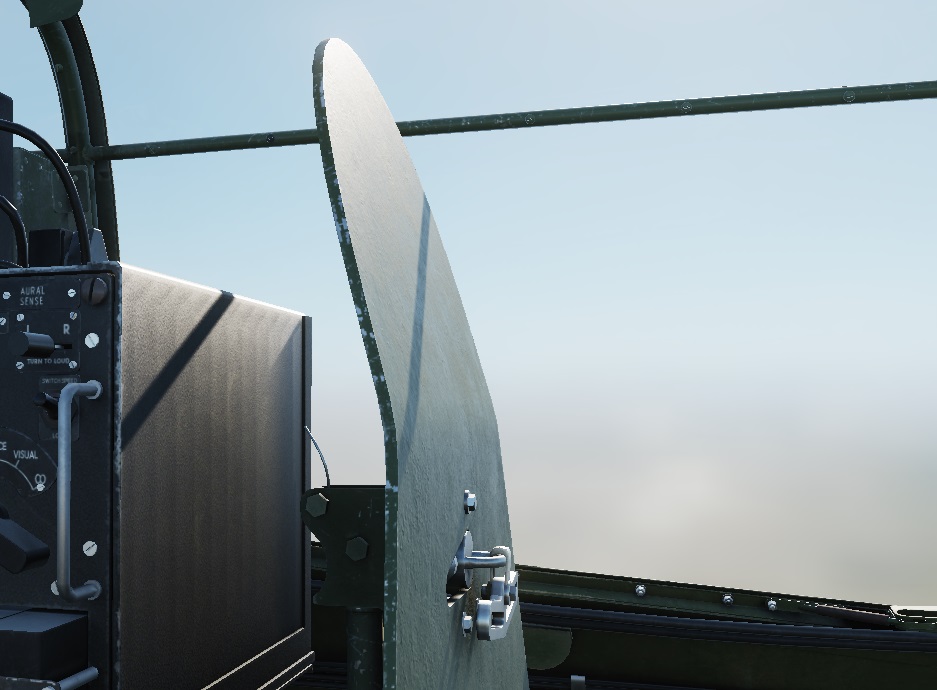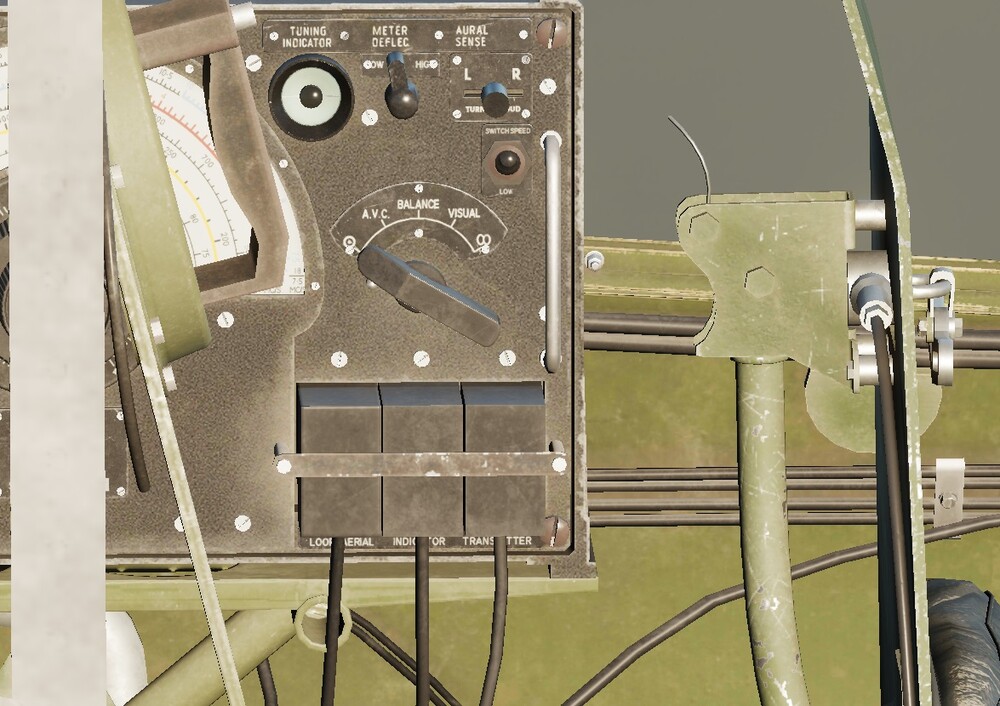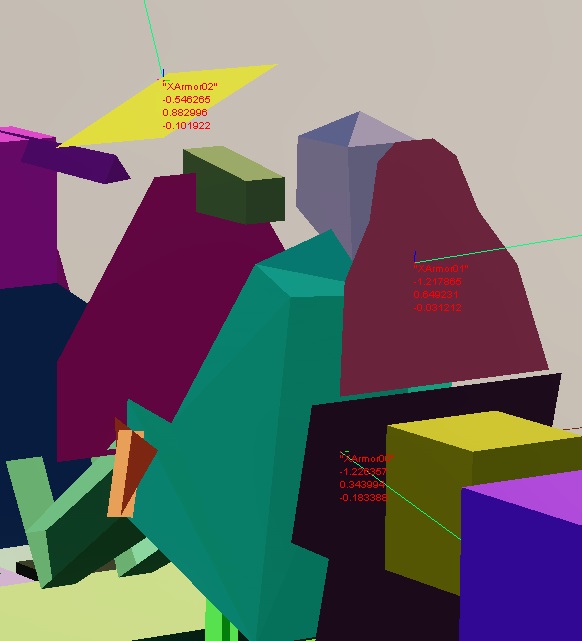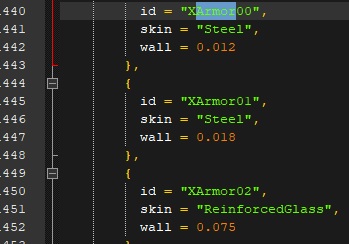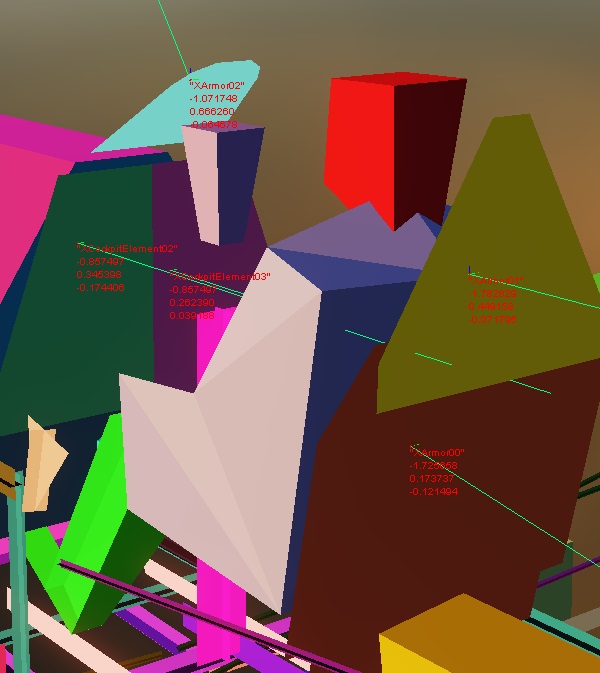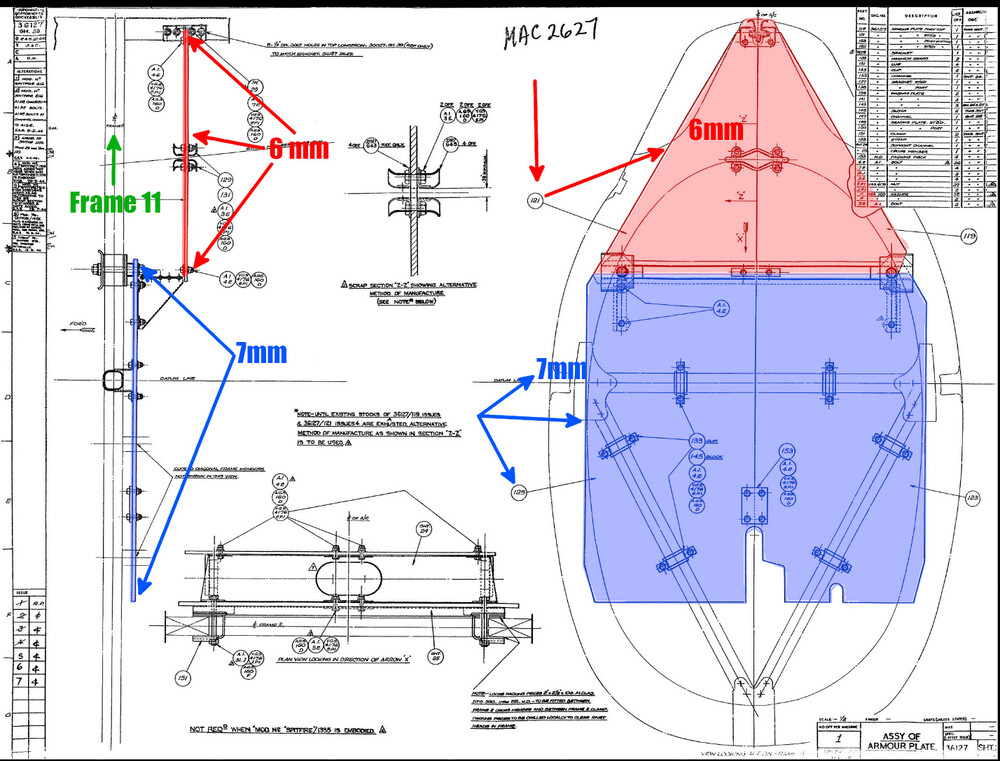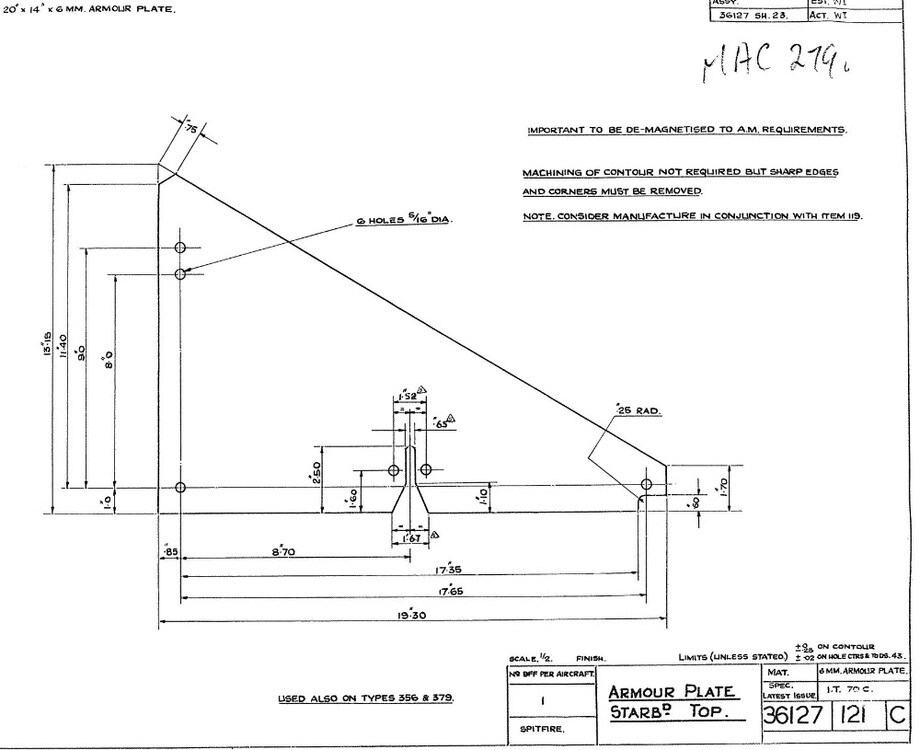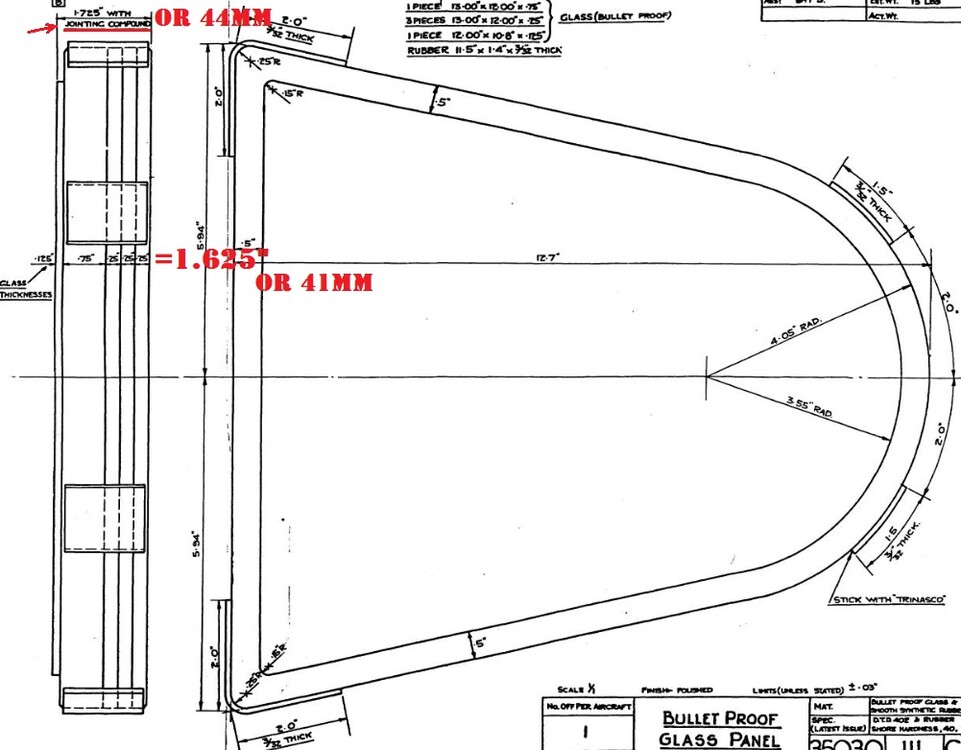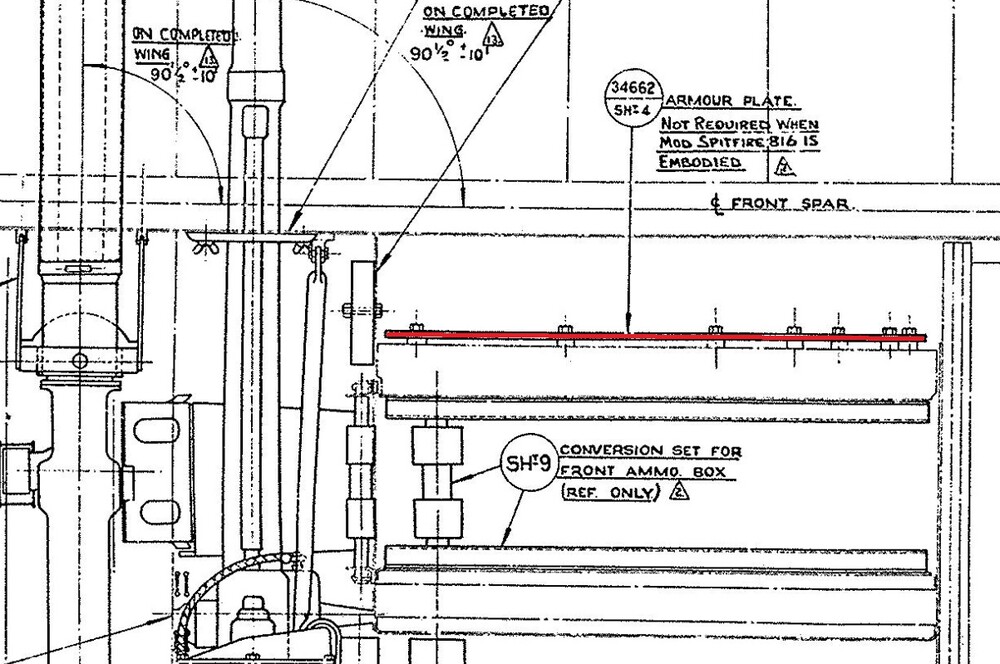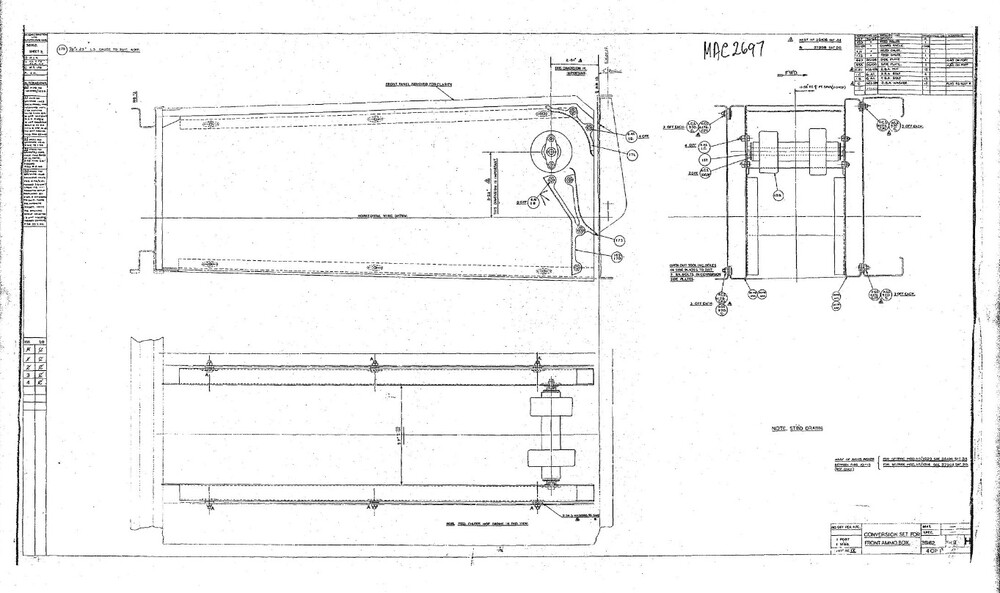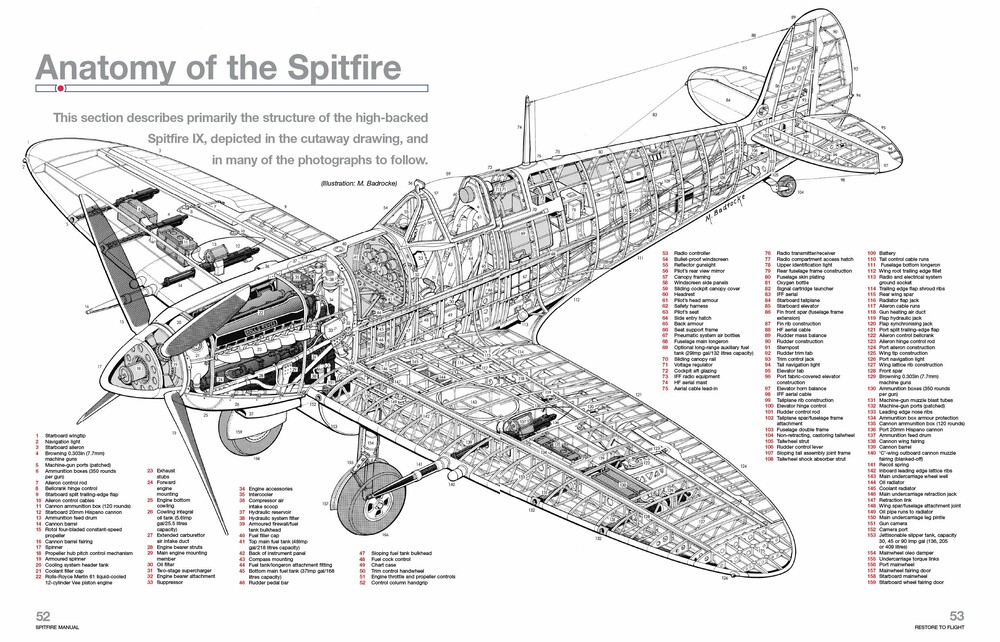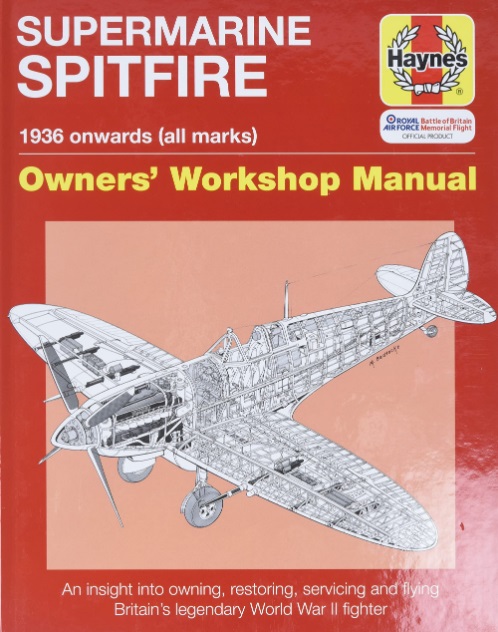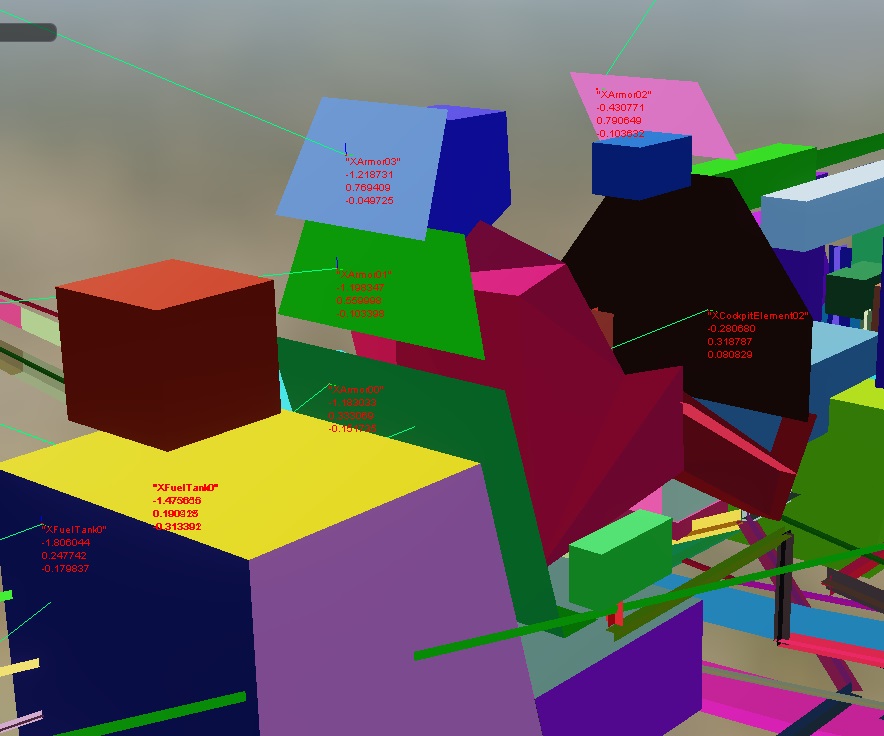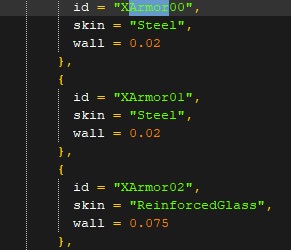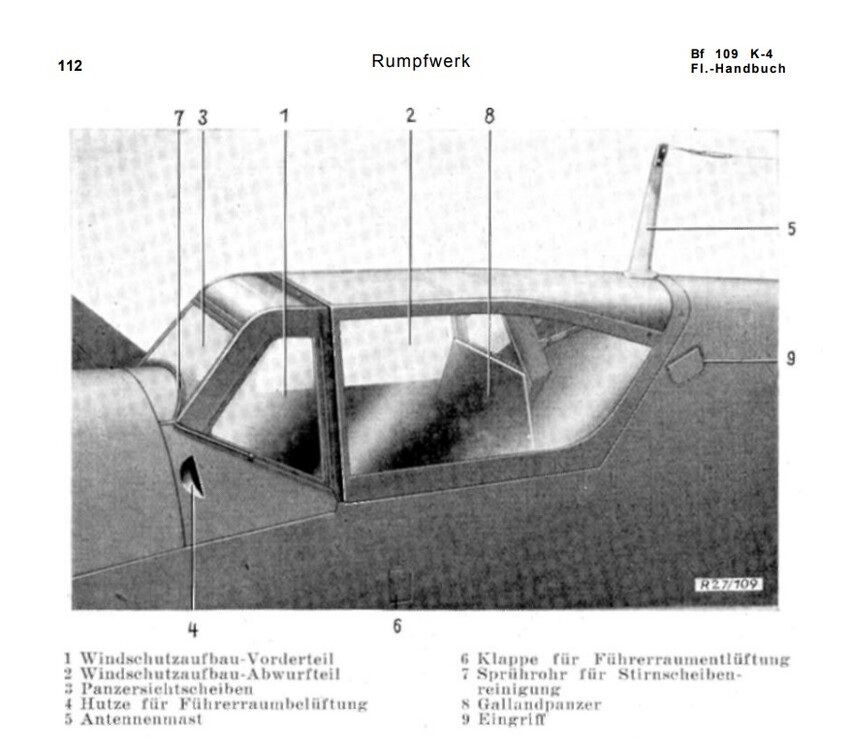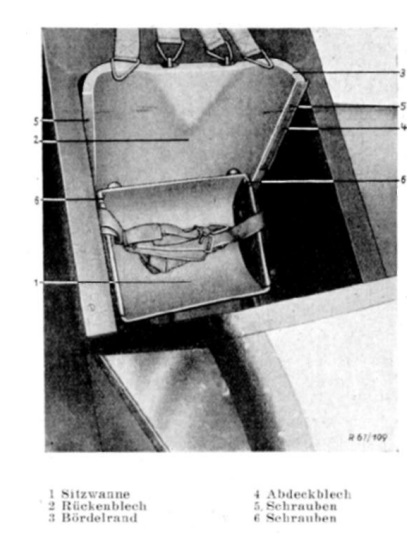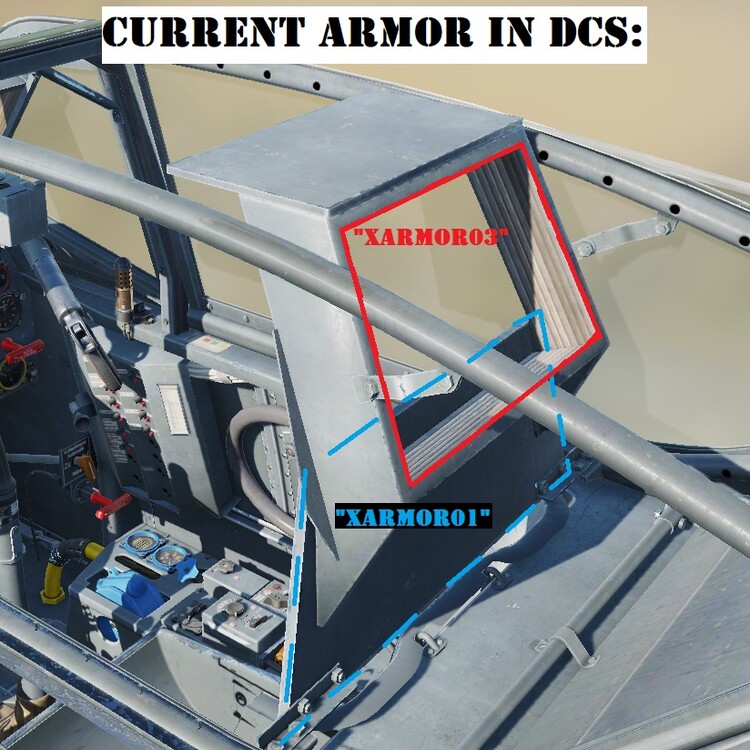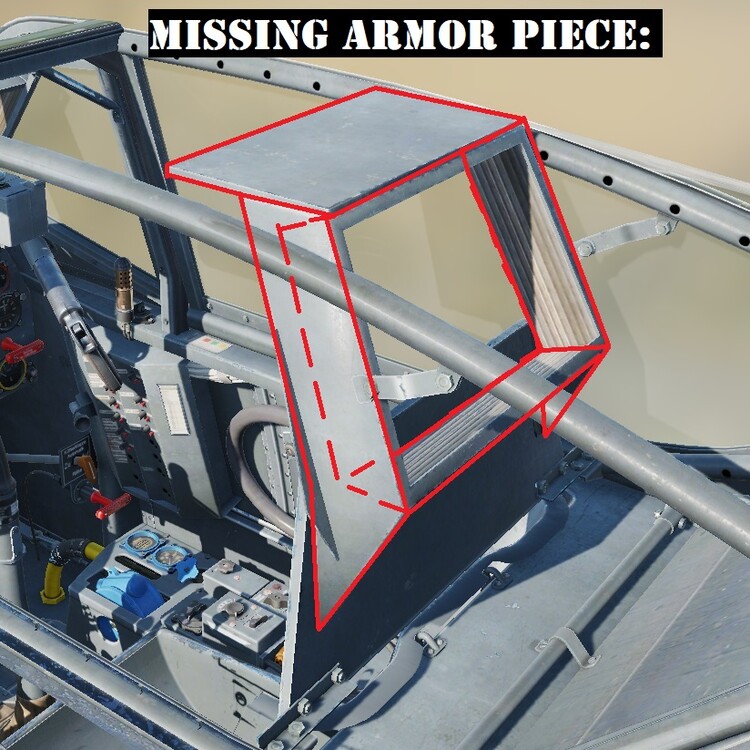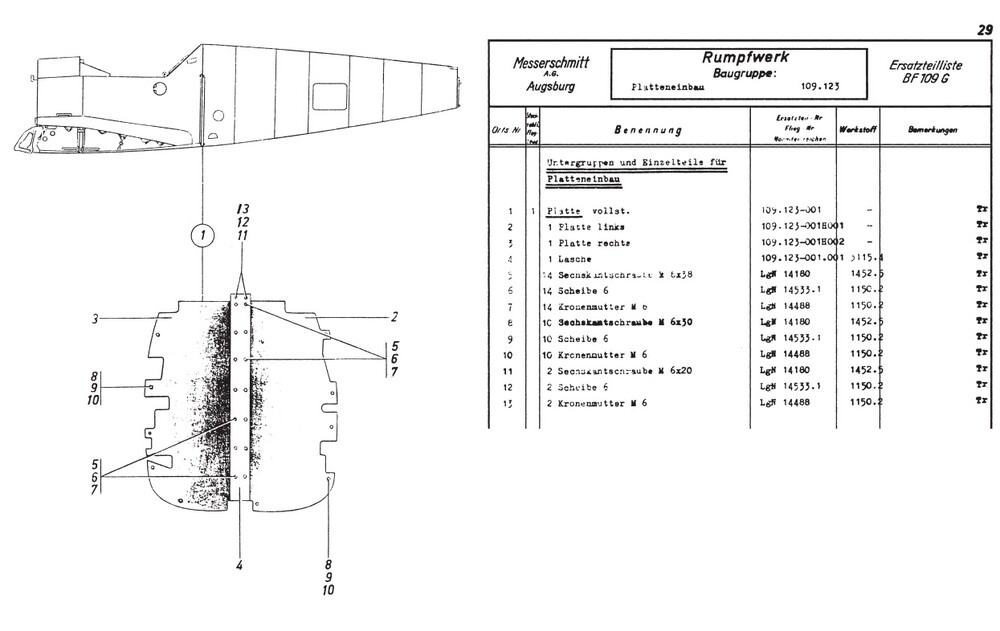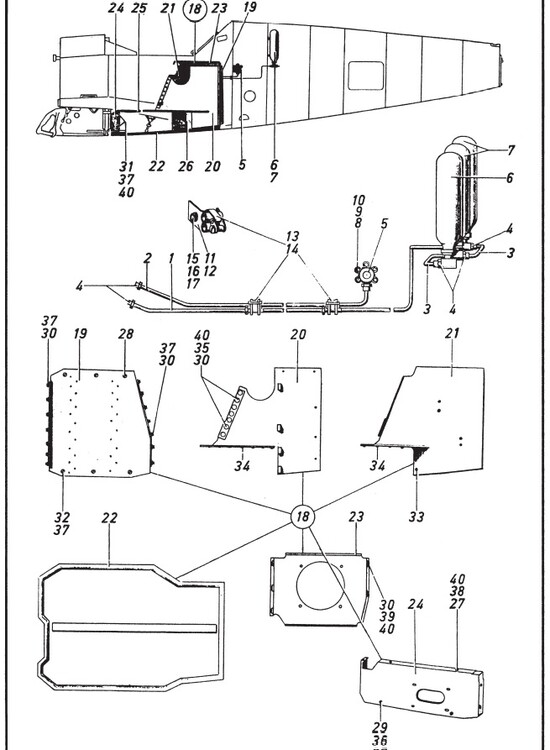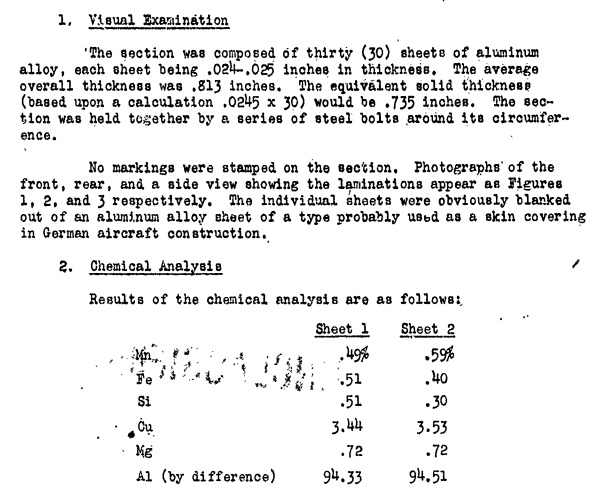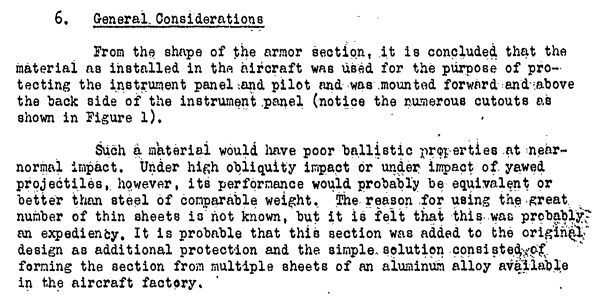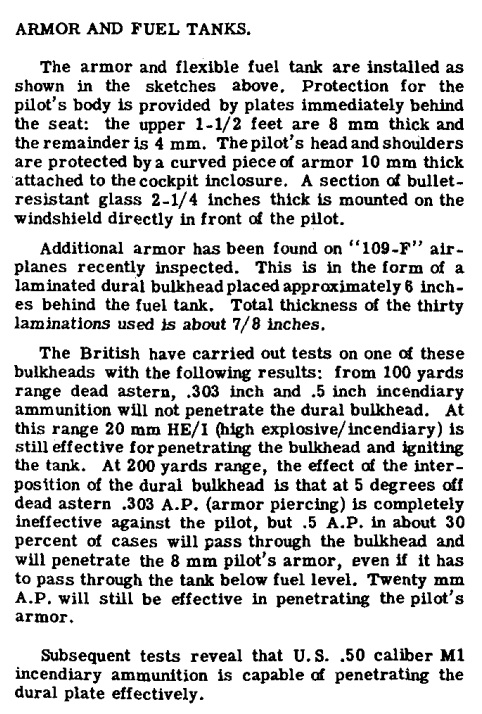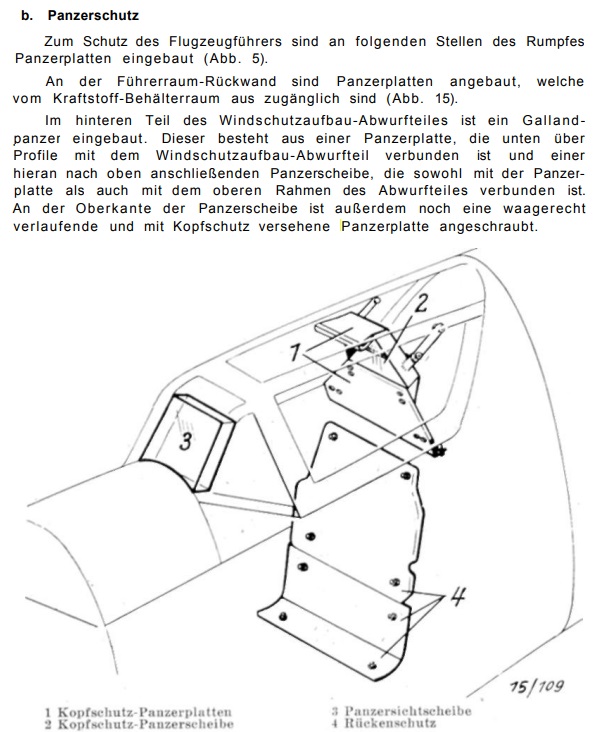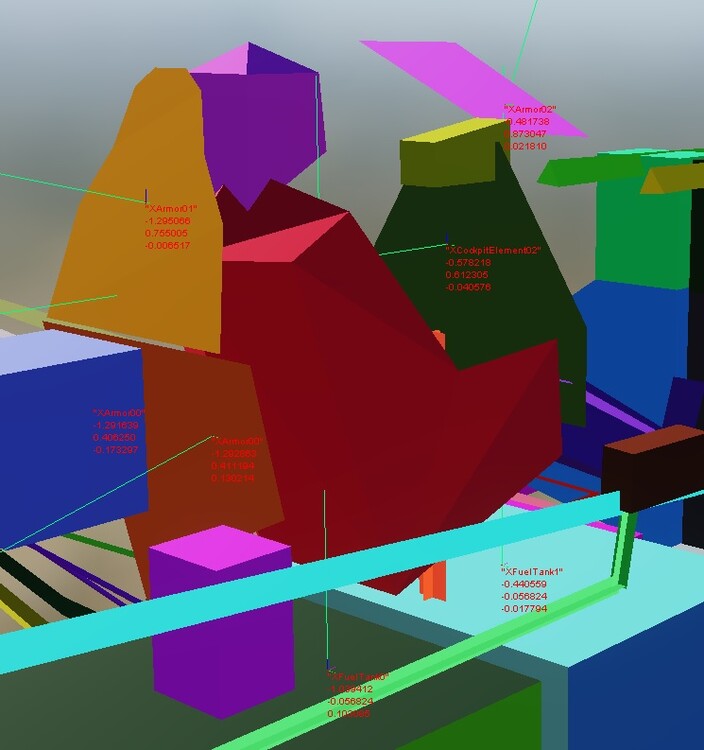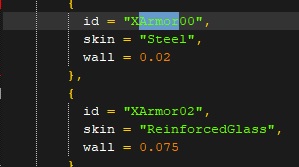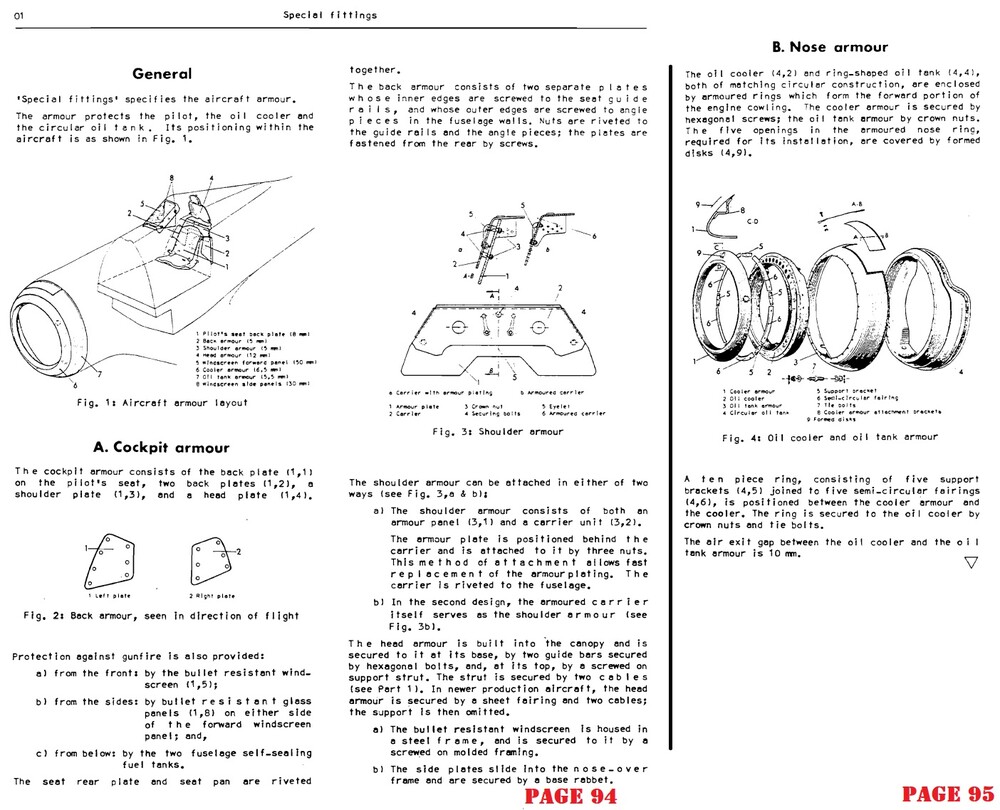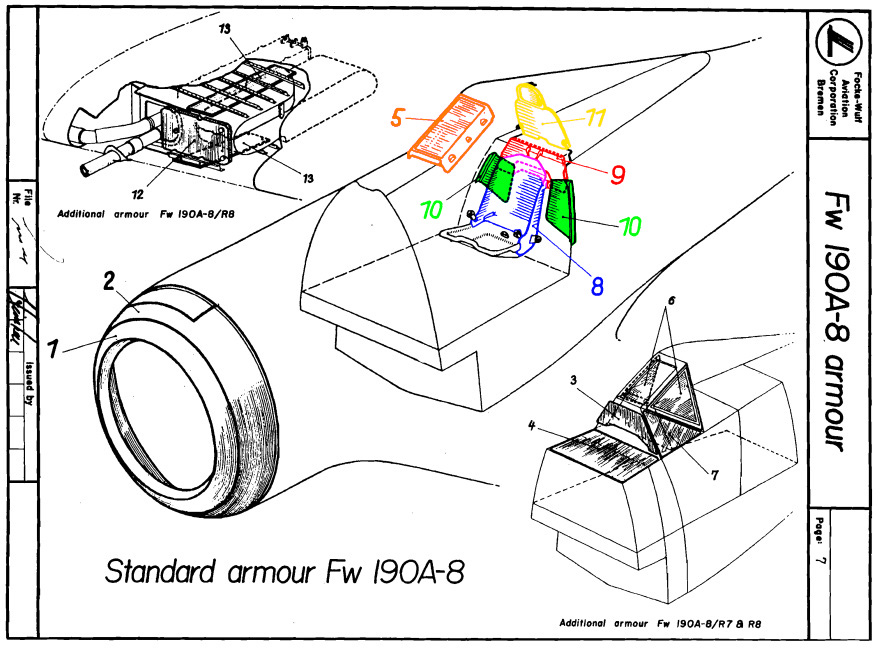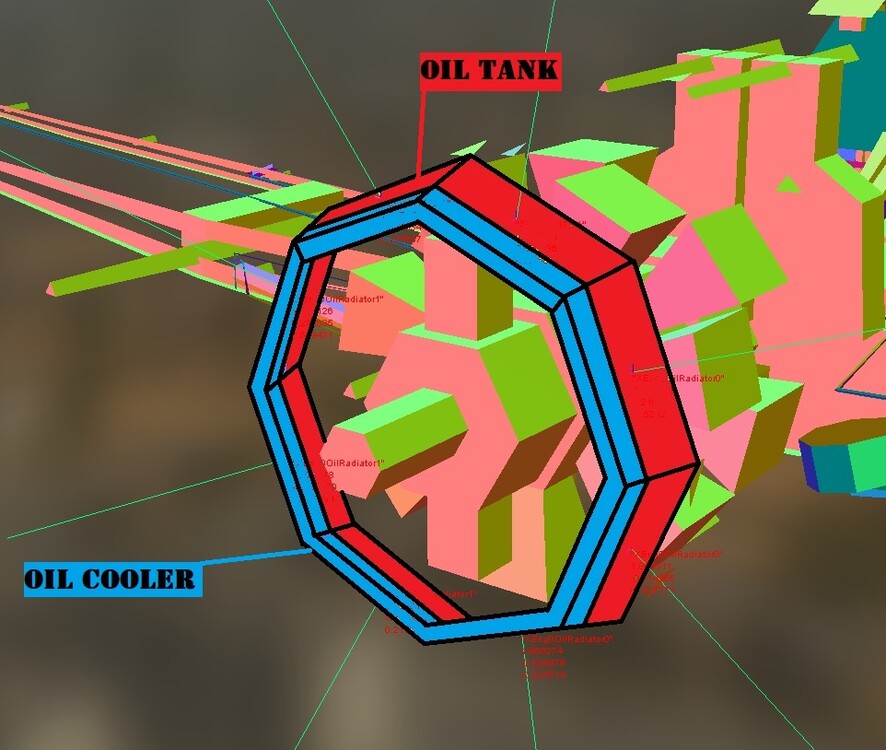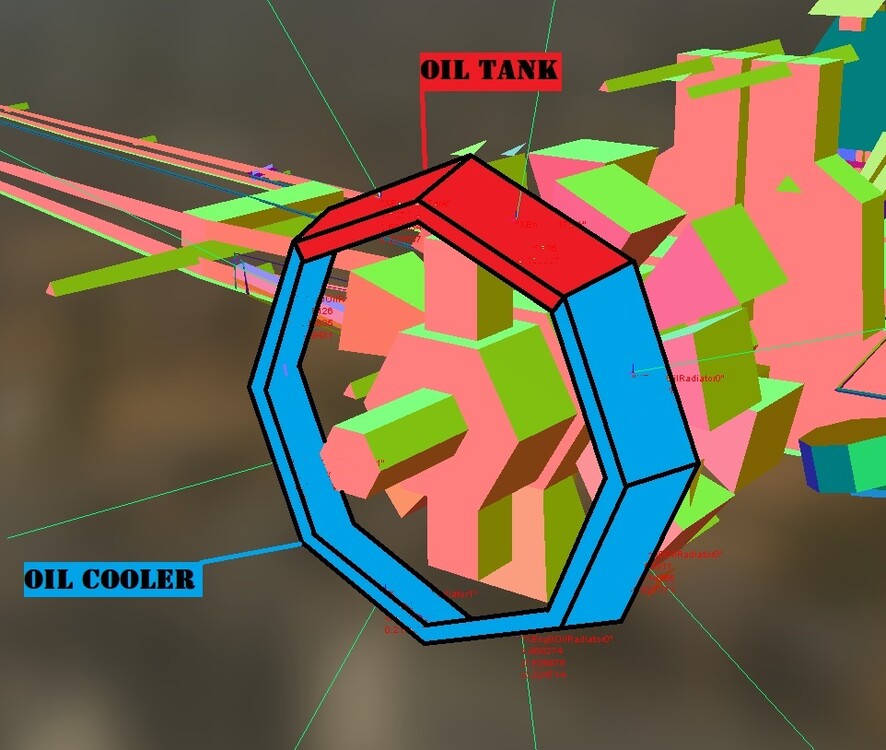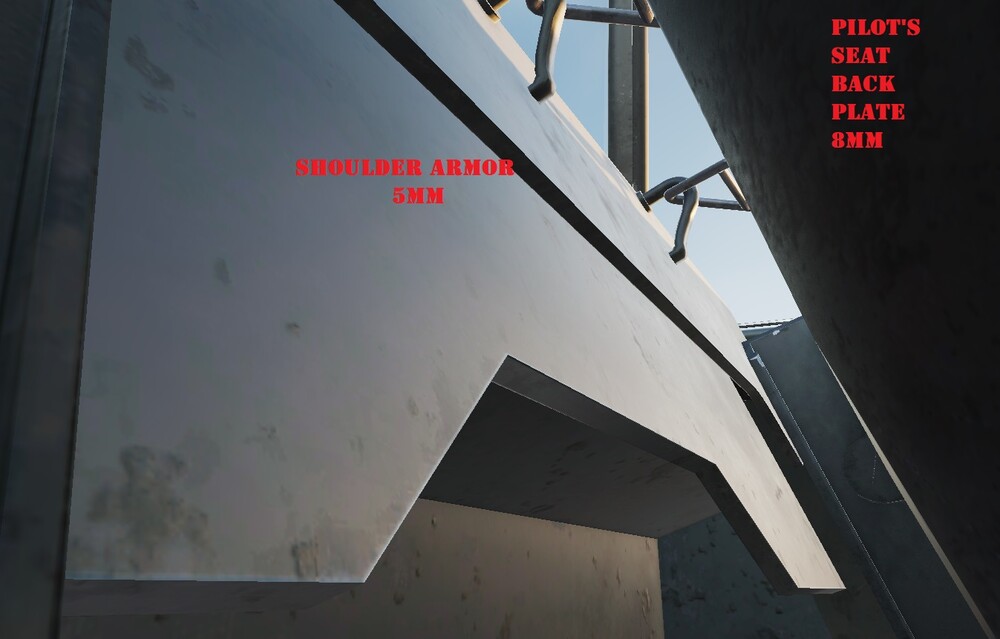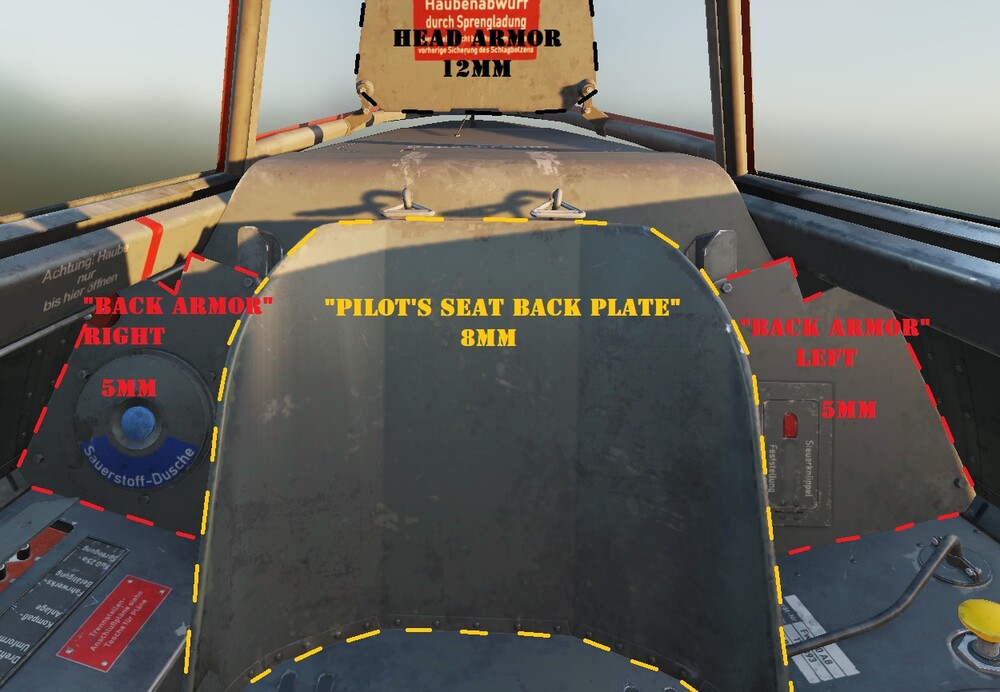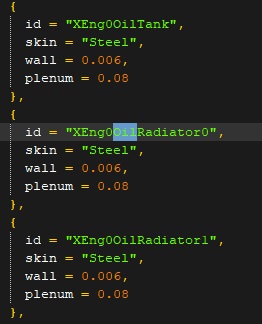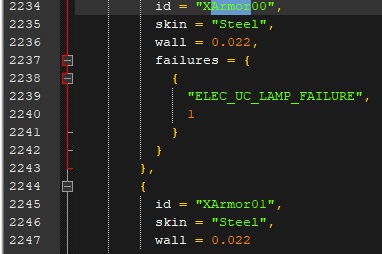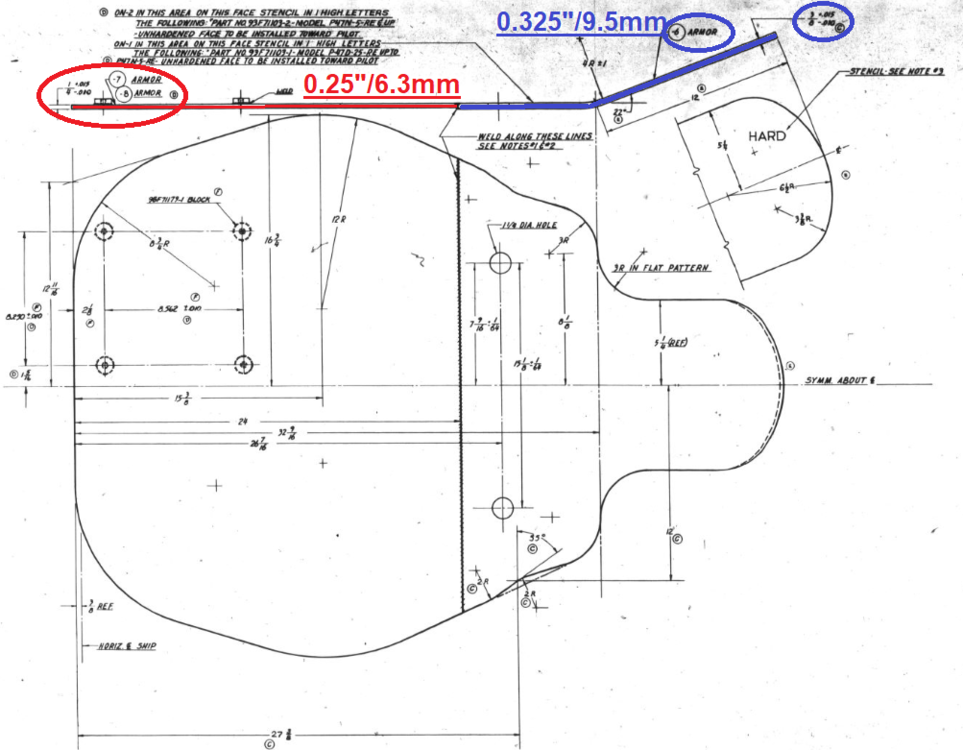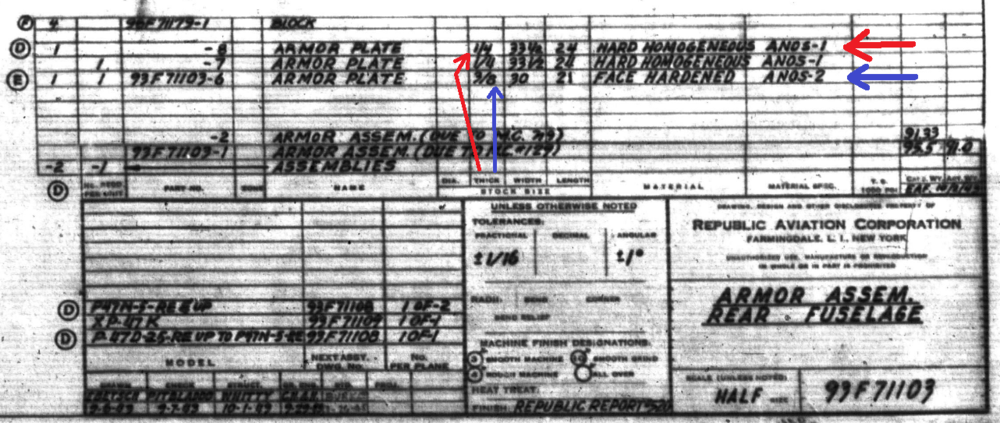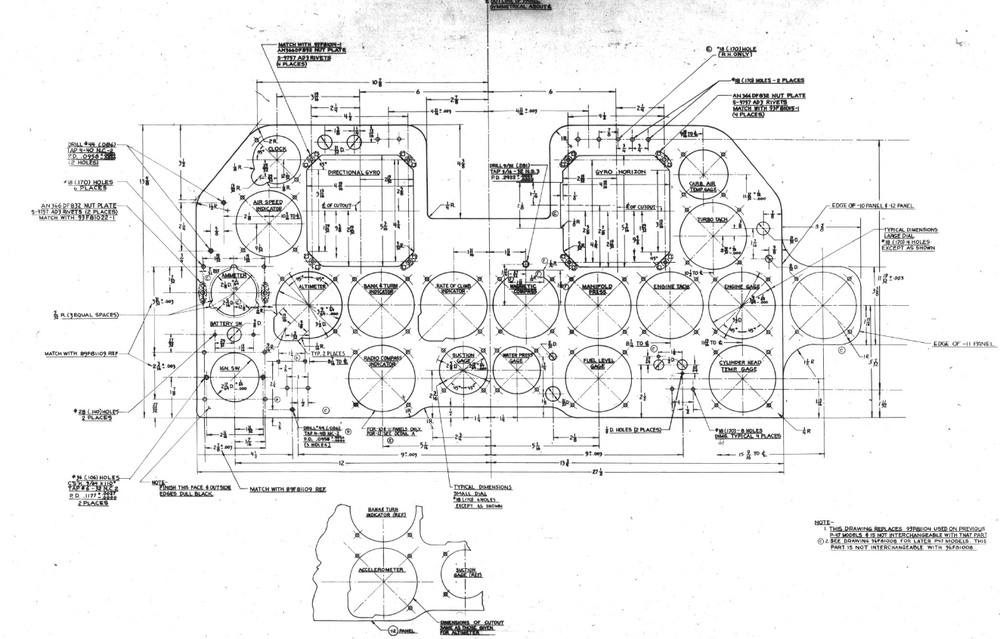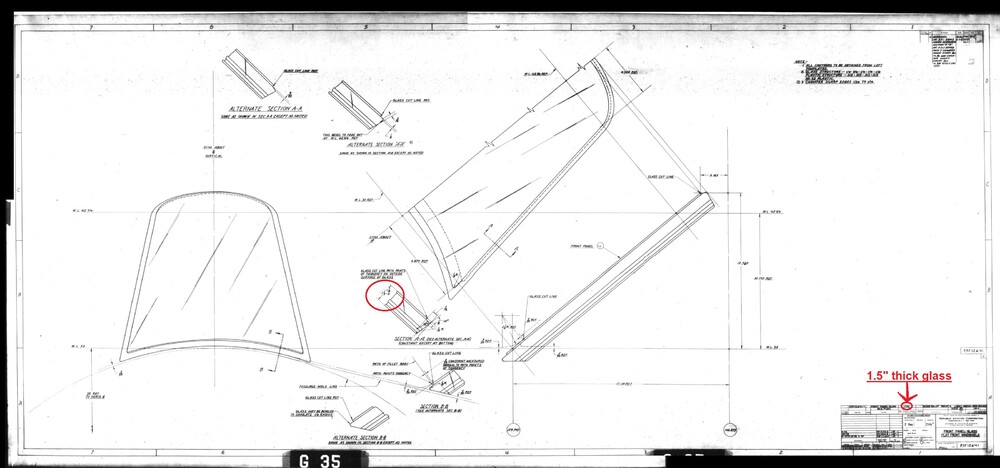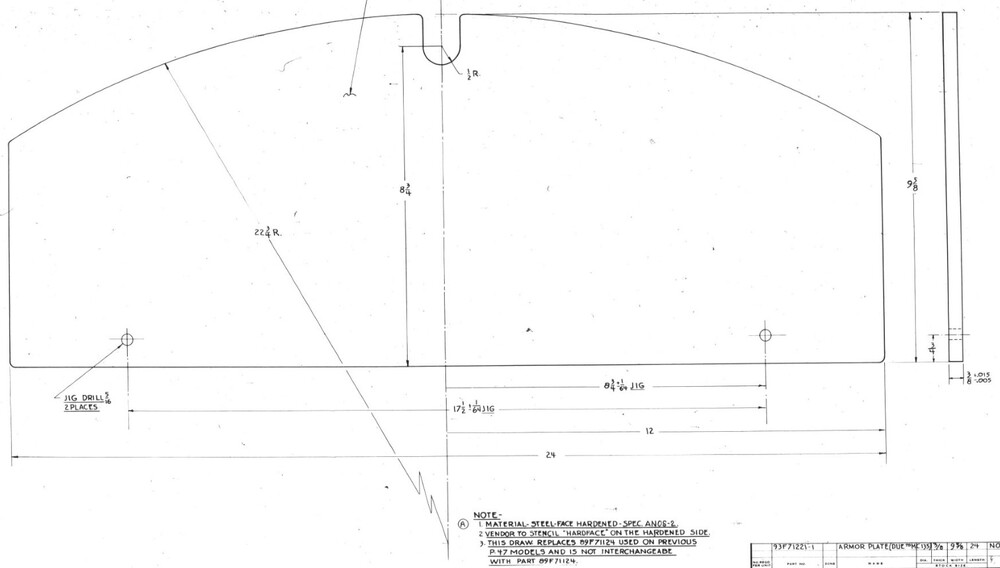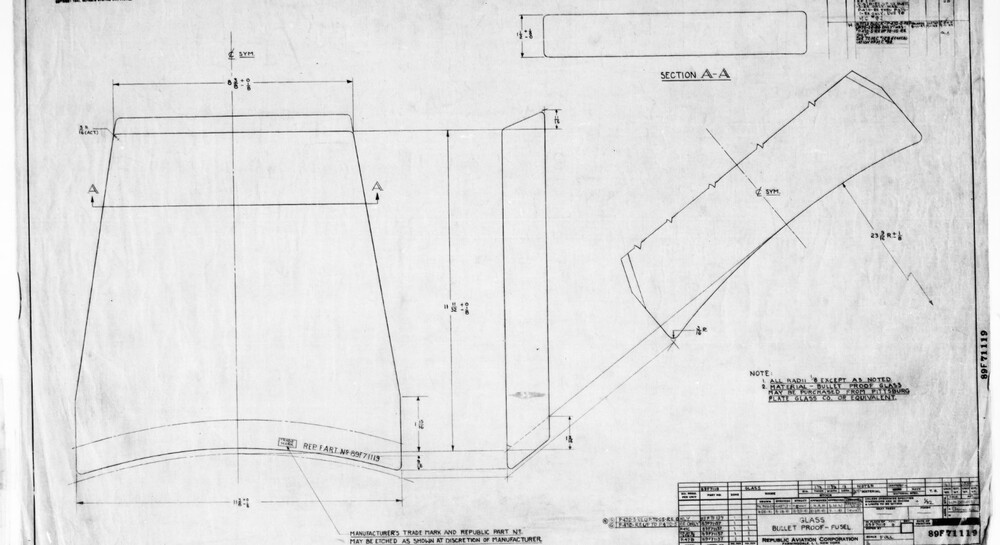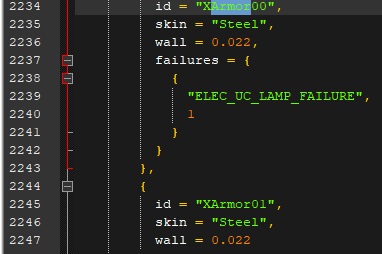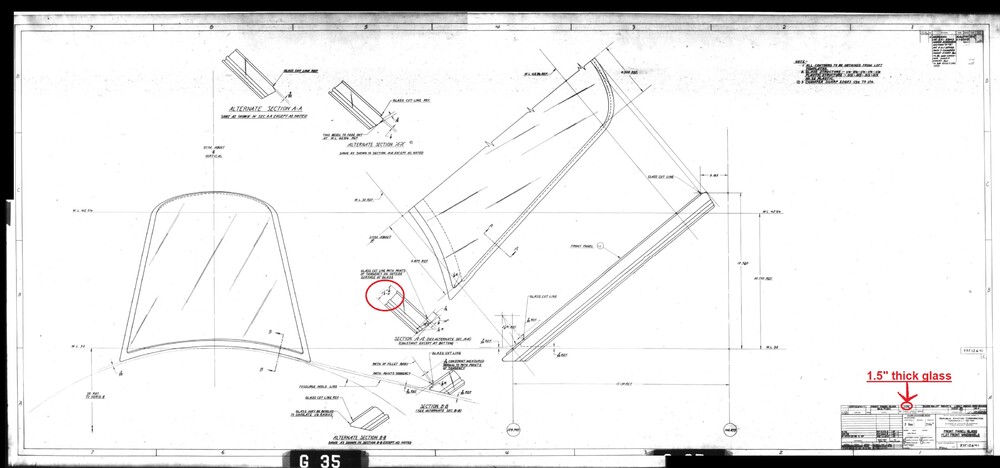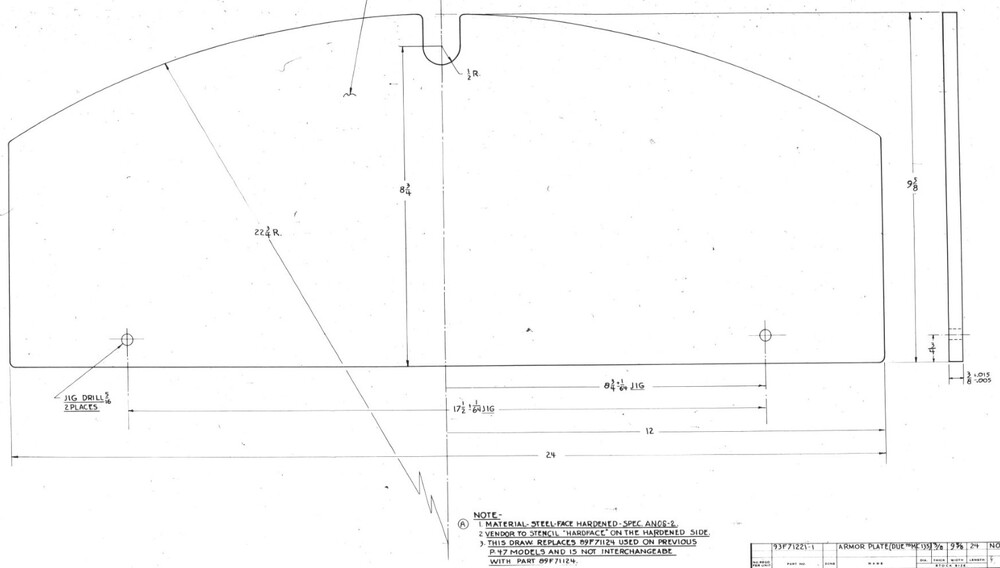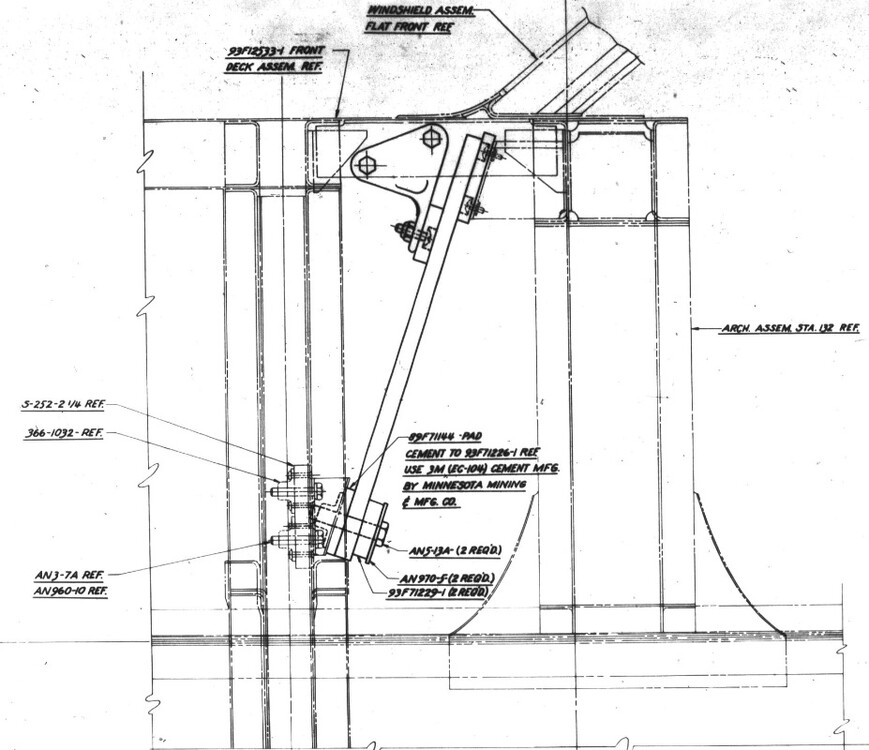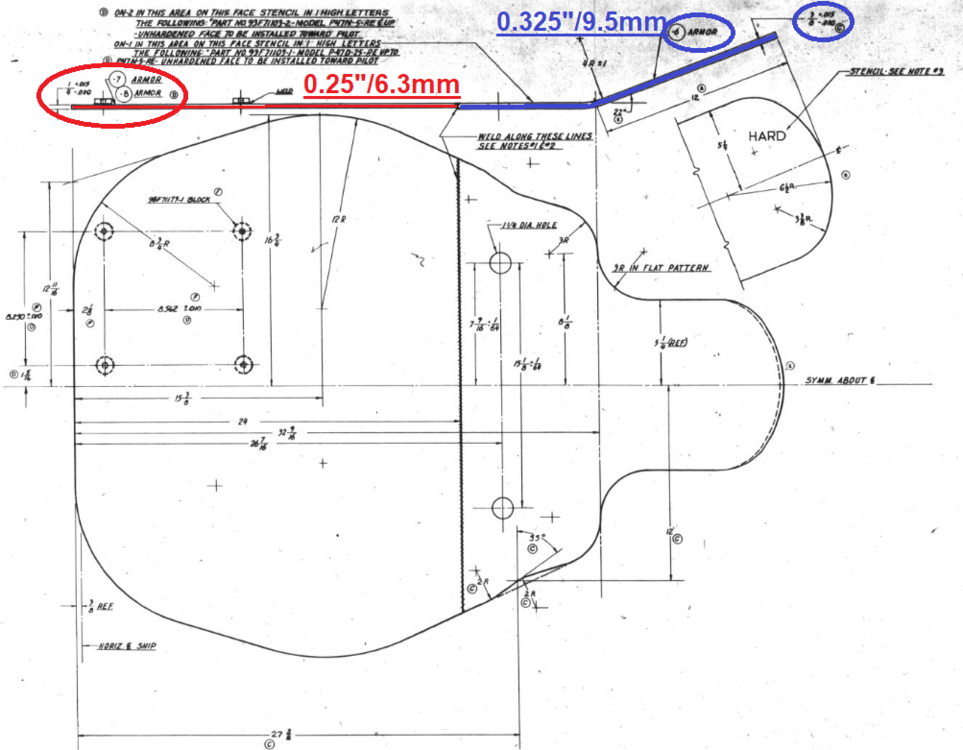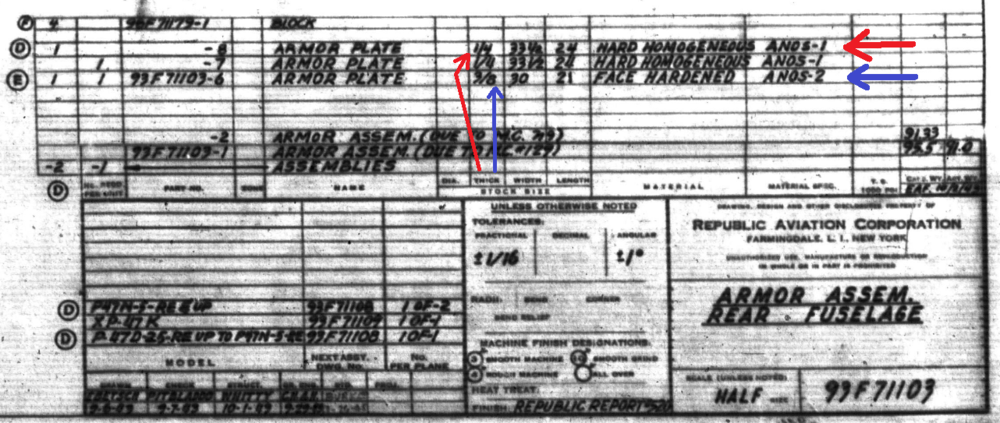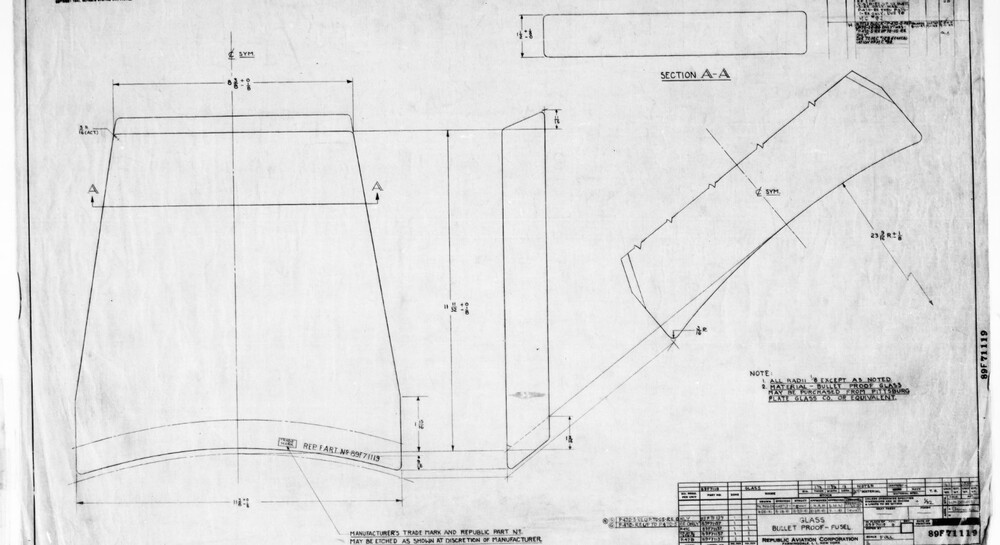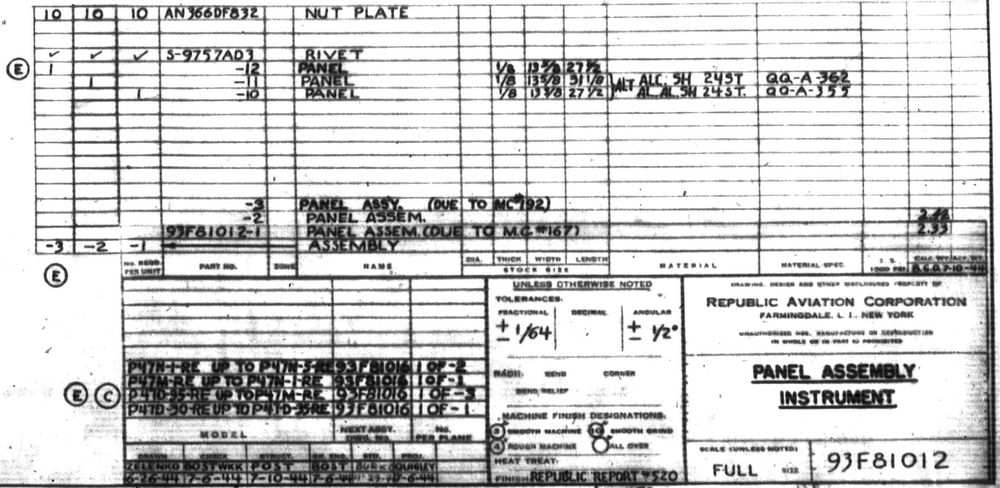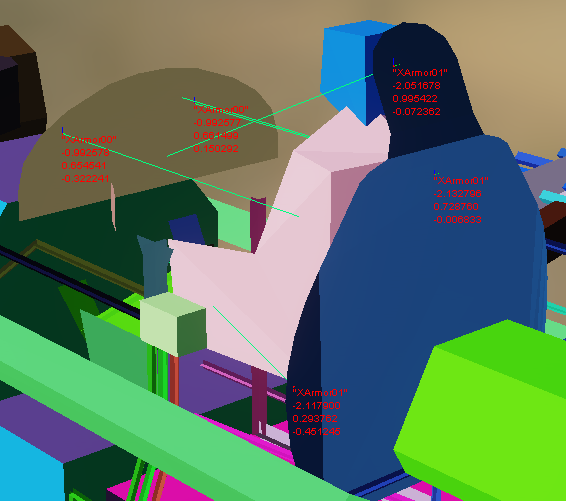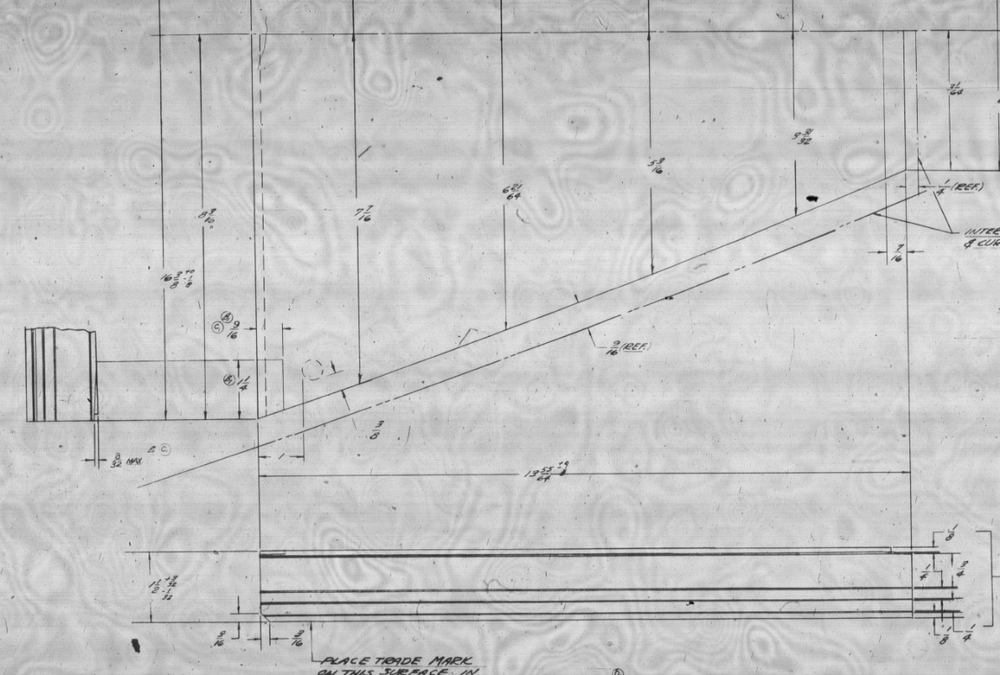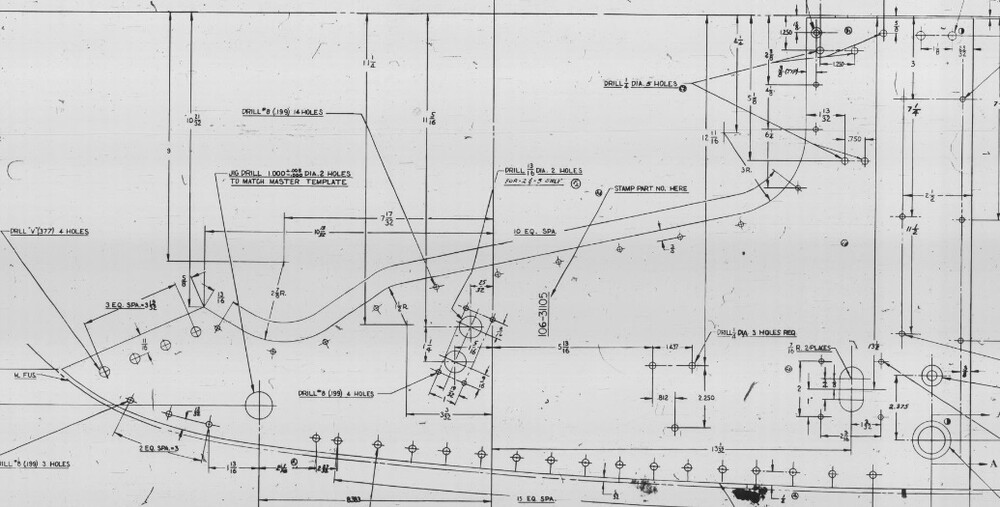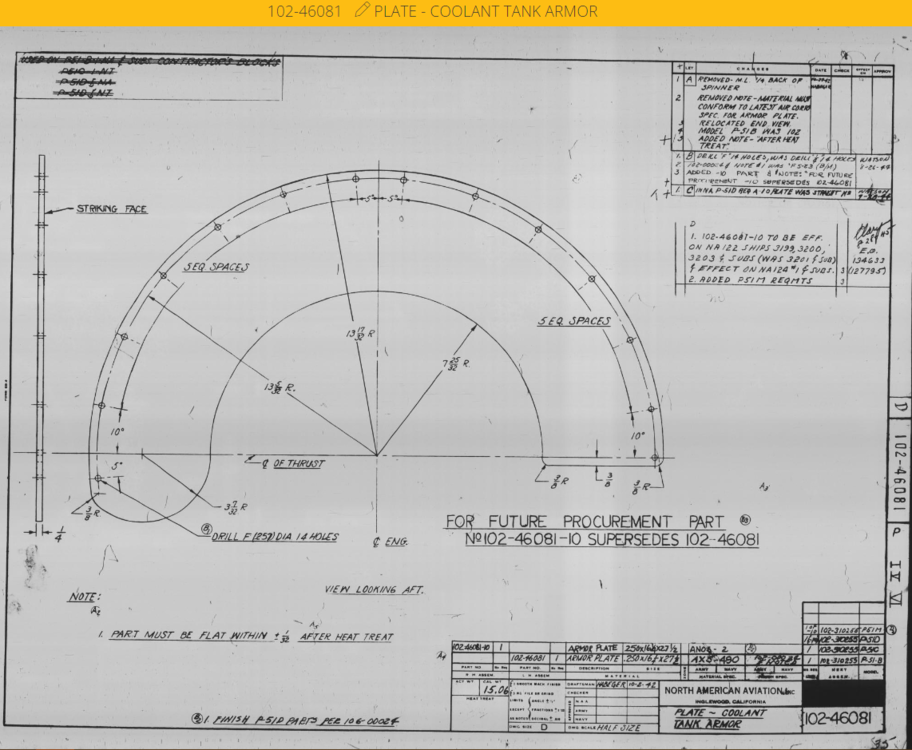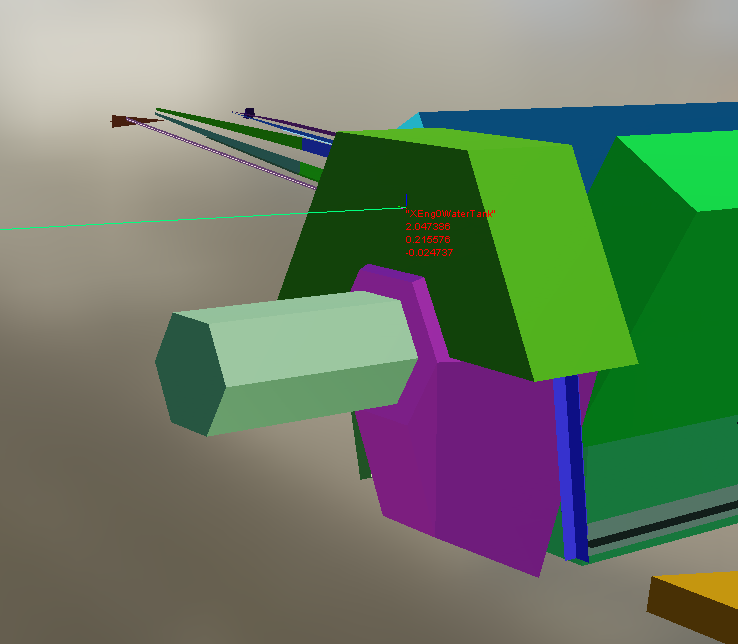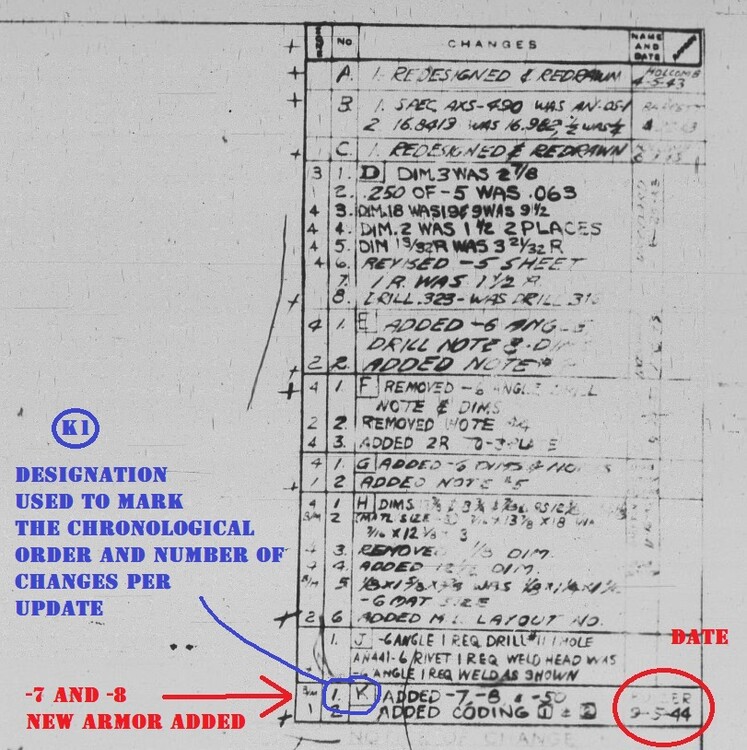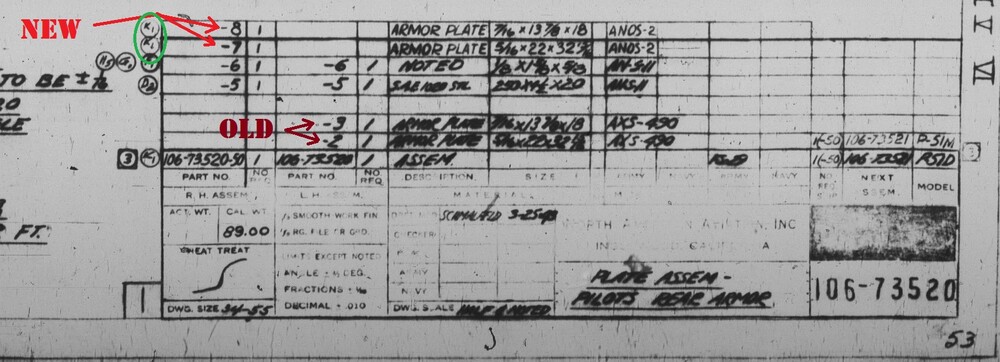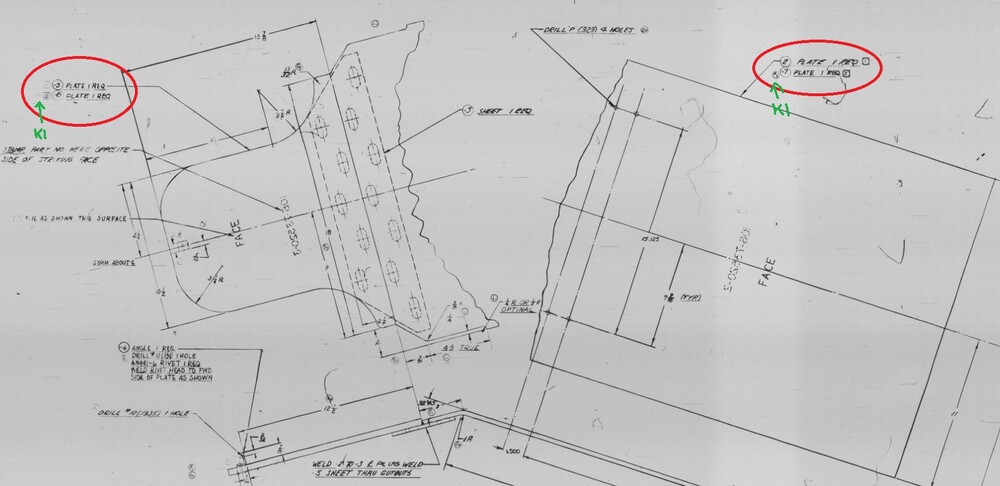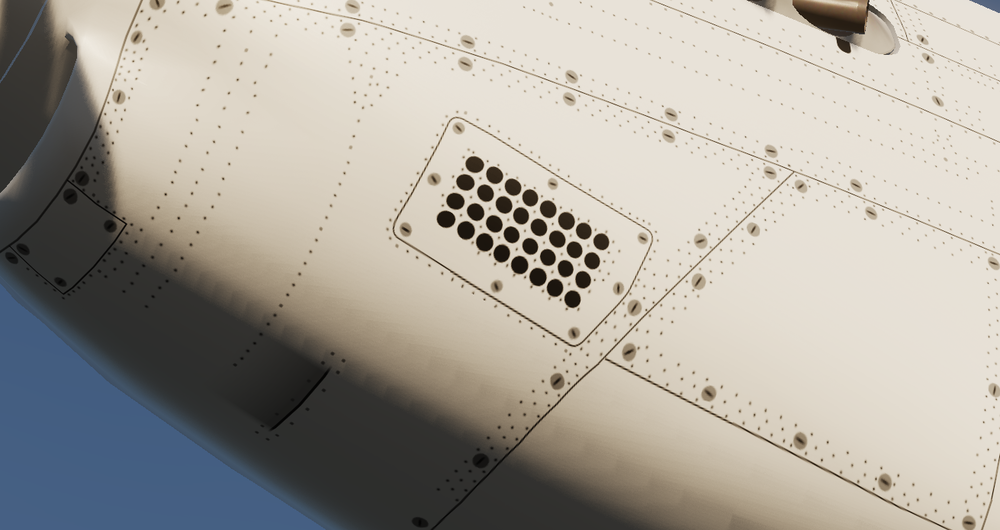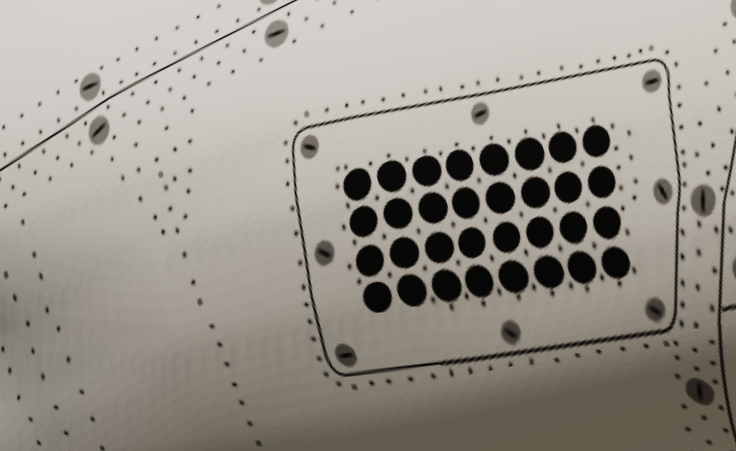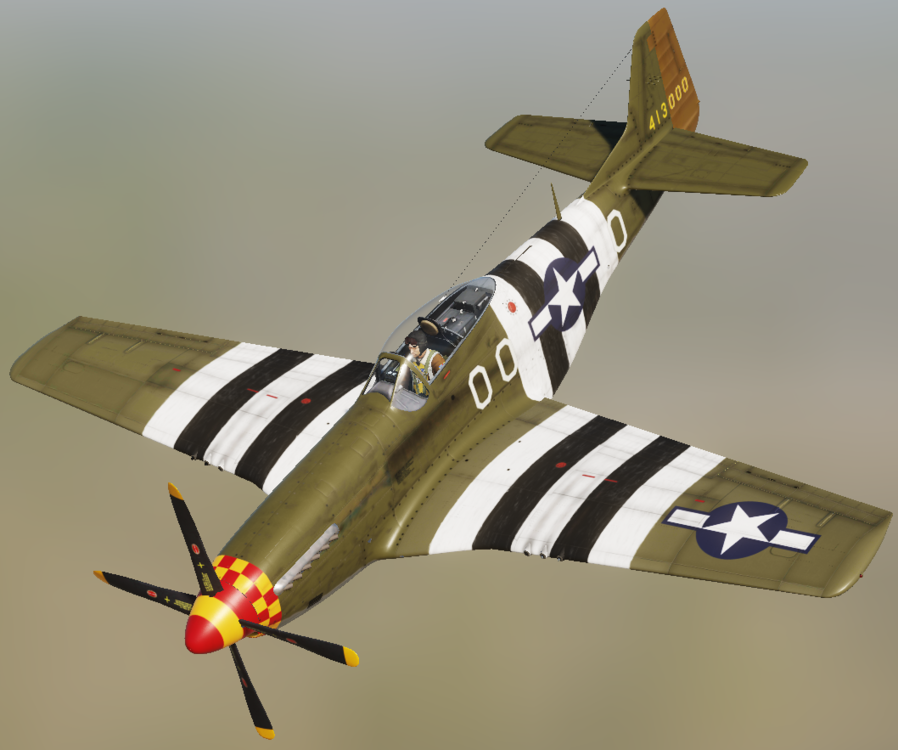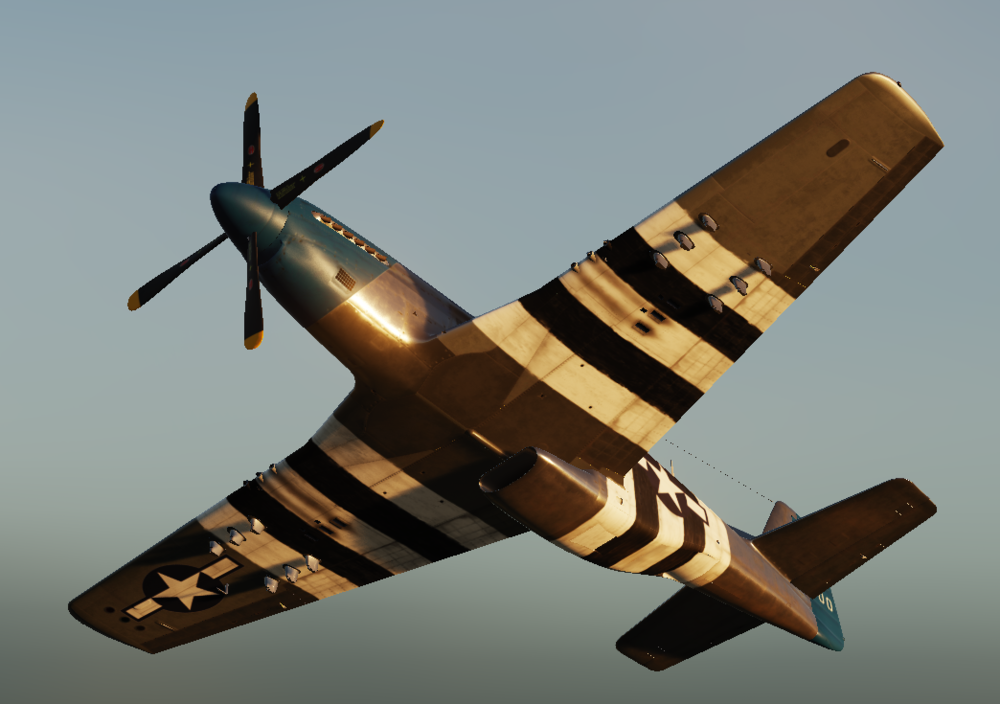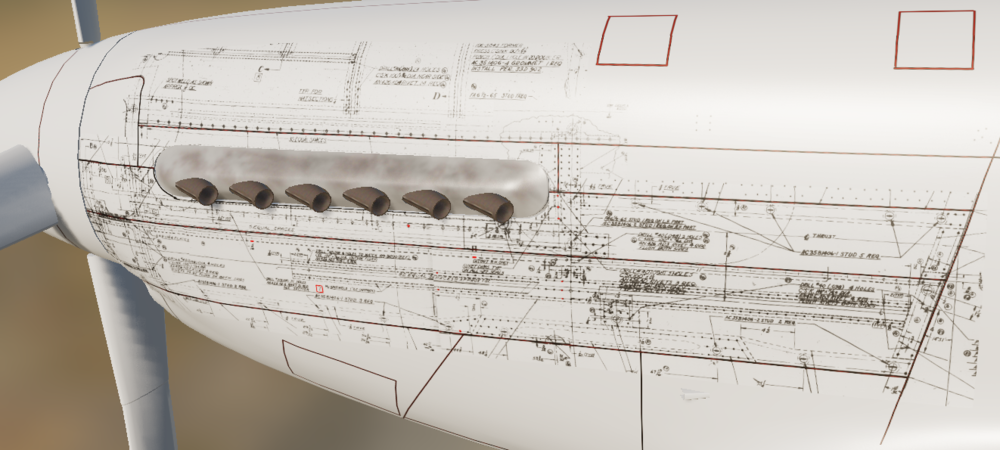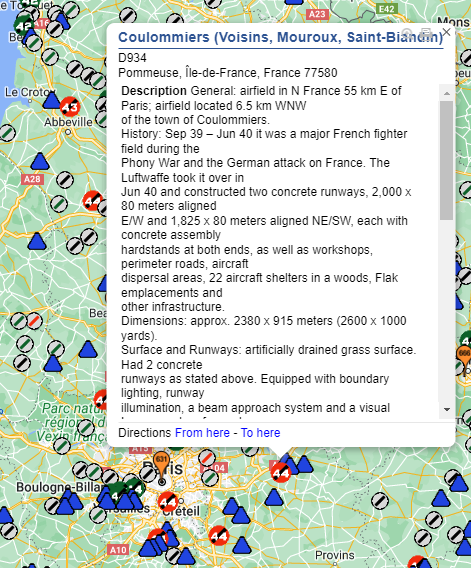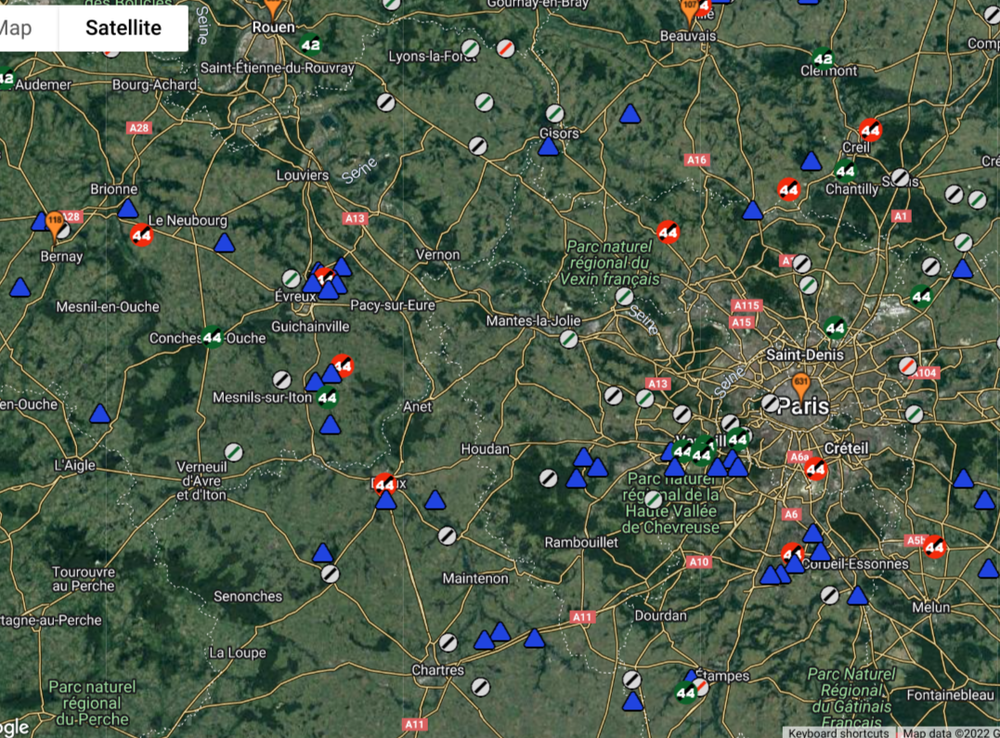-
Posts
1990 -
Joined
-
Last visited
-
Days Won
1
Content Type
Profiles
Forums
Events
Everything posted by Magic Zach
-
Lately with the A8 and Mosquito (both of which iirc weren't on the kickstarter), it does seem that ED is making somewhat a concious effort to develope aircraft for a 1944 planeset. Peronsally I'd rather we get an expanded planeset, and a 109G-6 is part of that. And the thought of having a map to match it is also very nice. Will I pay $49.99 for a sub variant? For a 109G-6, for a P-51B...I absolutely would
-
Is it possible we could get an answer to what exact type of "steel" is used in the damage model? Generic or homogeneous steel qualities, of face-hardened steel? Been getting a lot of questions about it, particularly in Discord, and I don't have an answer for them.
- 29 replies
-
- protection
- dcs
- (and 17 more)
-
A couple of us were dicussing this possibility, but it seems that's not the case. Primarily because face hardened armor will provide about another 10% "effective" thickness over homogeneous armor, and 10% more from 11mm doesn't give you 22mm. The other reason being that the armor values used in DCS by default are universal for nearly all plates and all birds, almost all being eithe 22mm or 20mm (specifically looks like 20mm was just 0.022 with just the thousandths place dropped for convenience maybe), while the reality is all our aircraft have different thicknesses of protection.
- 29 replies
-
- protection
- dcs
- (and 17 more)
-
I've made a mod that modifies the pieces of existing armor to match the data found. Most of these armor plates got halved, some got cut down to a third. Using the lightest airborne caliber, the Spitfire's .303s, I did some testing with this mod, firing pinpoint on the cockpit of all aircraft except the Fw 190D-9. I skipped this aircraft because the armor is identical to the A8, so the Anton's results can vouch for the D9. These are the results using the default armor: These are the results using the modified armor, as per the summary section on the end of each post above. NOTE however that this only changes the existing armor in each aircraft, and does not modify the shape of the armor, or add entirely new armor: NOTES: -The P-47 was not included because upon modifying its armor, DCS would kick back and crash when attempting to load a flight/track. So the results of the modified P-47's armor are not known. -The fuel tank in the 109 was given a 19mm aluminum wall. This affects the wall thickness of the fuel tank from all sides, but for the intents of this test, they effectively worked as that 19mm 30-laminate dural bulkhead behind the fuel tank. -The Spitfire admittedly has very light armor, lighter than the rest. And it shows in the videos. The .303 rounds appeared to pierce through the armor, through the pilot, and into the fuel tank or engine. On a different test (not recorded and shown here), I ignited the fuel tank on fire this way, from a dead astern shot, and the pilot popped the canopy but he bled out before he could bail. The piercing ability on this bird seems a little excessive, and I wonder if it's appropriate to add more content and objects to the Spitfire's damage model, such as a firewall bulkhead. The firewall bulkhead was made of asbestos, sandwitched between two layers of aluminum. I did not score a kill on the Spitfire pilot in either default or modified during this particular video-recorded set of tests, due to the AI reacting to the loss of engine power first. -Regarding the Mosquito, it appears that when the pilot is killed, the plane will not roll over into a slight dive like the other AI. The Mosquito, when the pilot is hit, will keep its current course and hold its controls standfast. This is what I found through other testing on the side, off-camera. So what you'll probably want to observe in these video clips, is when the pilot's head suddenly slouches. However either the navigator doesn't have a death animation, or he's superman Fixed Armor Thickness for 190s,51,IX,109, and VI.zip
- 29 replies
-
- protection
- dcs
- (and 17 more)
-

Pilot Damage Model / Penetration Issue
Magic Zach replied to Cass's topic in Western Europe 1944-1945
-
Final post has just been added! It took me a while to complete all this writing
- 29 replies
-
- 6
-

-
- protection
- dcs
- (and 17 more)
-
Fair but we have the map for 1944 so it's the more straightforward direction to go for the time being. And besides, the very late superbirds get a little boring, there's a much more eclectic feel to flying a more mid-war bird
-
Just noticed this thread and I had to come here to say WHERE'S MY Bf 109G-6/U2 and U4 WITH "AS" ENGINE OPTIONS, EAGLE DYNAMICS?? WHERE IS IT???
-
Regarding the Mosquito and Fw 190D-9: These are two aircraft that I haven't found any specific information for, butt I'm very open to suggestions! However based on these other aircraft, educated guess can be made. [FIXED: DEC 16, 2022]The Fw 190D-9 - Looking within the cockpit, we can get the impression that the armor layout between the Fw 190A-8 and the Fw 190D-9 are very closely related, and I believe the D-9 could use the same armor values as the Anton. Either way, even if the new values are wrong, it will bring the aircraft more in line with the others, and remove it from it's 20mm armor plate (yes, all these birds currently have nearly the same armor plate thickness). The Mosquito (UPDATED 11/29/2022) - The following paragraph is now mostly overwritten by the content further below, so I'll spoil it but I'll also leave it here so readers will have better context: UPDATE (NOV 29, 2022) As Nineline recommended a few posts down, I have got in contact with the individual Numbers on Discord. He's a well-informed individual, who is very personally invovled with flying Mosquitos in New Zealand today. I asked him the relevant questions, and here are his replies: Notice how he mentions a plate between the the instrument panel and BMG gun bay. If you look at the screenshots of the x-ray.edm above, you'll notice that this plate is not featured in DCS. Do not mistake the panels further underneath the windshield, as those are merely the instrument panels, composed of 2 to 3mm aluminum in DCS. This large, subdivided oval piece of 15mm steel armor was between those instrument panels, and just behind the BMGs. Now, in DCS, the navigator has a two-piece armor back behind him, and the pilot as one solid one. However, all three of these pieces are the same thickness. Well, now we know why the navigator had his head armor modeled independently, and that they were different thicknesses, as listed according to Numbers. And yes, they all are steel: Additionally in this photo above, Numbers mentions that the windshield is bullet resistant. And while he says that he couldn't recall its thickness, he recalled it a few minutes later: Now, what on Earth is that sloped steel 22mm armor on the top of the nose, in front of the windshield, in DCS? Well, I asked Numbers this as well. This steel 22mm sloped armor in DCS, is evidently, only 2.5mm of aluminum! On a rather positive note however, the 40mm armored glass in DCS is actually spot on! No change is needed to the armored glass. In summary (Fw 190D-9): -[FIXED: DEC 16, 2022]Copy adjusted armor from Fw 190A-8 to the Fw 190D-9 In summary (Mosquito): -Change XArmor0 from 0.014 to 0.01 -Change XArmor2 from 0.014 to 0.008 -Change XArmor1 from 0.014 to 0.005 -ChangeXArmor4 from 0.022 to 0.0025 -Change XArmor4 from Steel to Aluminum -Add 15mm steel armor plate immediately behind the Browning machine gun bay
- 29 replies
-
- 3
-

-
- protection
- dcs
- (and 17 more)
-
The Spitfire (INCORRECT): [FIXED: DEC 16, 2022]The headrest armor plate (XArmor01) - This is the only warbird in DCS that appears to have unique armor values, that aren't 20 or 22mm, so I was at first inclined to think that the armor had been set correctly. However this doesn't appear to the be the case either. DCS, as you can see above, has set the headrest armor to 18mm. This plate in fact only reached a depth of 6mm in truth. [FIXED: DEC 16, 2022]The body/bottom armor plate (XArmor00) - In DCS, this plate is set to 12mm. This plate should be set to 7mm [FIXED: DEC 16, 2022]The bullet-proof windscreen (XArmor02) - Like all the other aircraft, the Spitfire in DCS has the windscreen set to 75mm. This was in truth 41mm..or apparently 44mm with the glue between the layers included. The Spitfire (MISSING): The 20mm ammo box armor, and more - There was a plate just forward of the ammunition boxes for the Hispano's ammunition. I cannot find more specific details on it, other than it being featured in an exploded view from the Supermarine Spitfire Owner's Workshop Manual (that I haven't bought, but it's where the photo was from, online), and this schematic showing the armament placement within the wings of the Spitfire, and it includes the armor. It refers to drawing 34662/Sheet 4 for more specific information and dimensions on it, but unfortunately this appears to have been never uploaded to AirCorps Library. Nevertheless I'll upload what I have up to now.... In summary: -[FIXED: DEC 16, 2022]Change XArmor00 from 0.012 to 0.007 -[FIXED: DEC 16, 2022]Change XArmor01 from 0.018 to 0.006 -[FIXED: DEC 16, 2022]Change XArmor02 from 0.075 to 0.041 -[If further information can be found] Add 20mm ammunition box armor, spinner armor(?), bulkhead/fuel tank armor(?)
- 29 replies
-
- 5
-

-
- protection
- dcs
- (and 17 more)
-
The Bf 109K-4 (INCORRECT): Due to lack of hard evidence, I've had to rely a lot on earlier 109 versions to get my information. To my knowledge however, there weren't any changes to the armor on the Bf 109 after the change from the 109F to the thicker 109G armor layout. From that point on, the only change in the armor was what naturally came with the Erla-Haube canopy, and I believe a reduction in size of the aluminum plate behind the fuel tank (more on that later). [FIXED: DEC 16, 2022]The seat armor (XArmor00) and head/neck armor (XArmor01) - DCS has these both set to 20mm, but it appears this was something closer to 11mm for both. [FIXED: DEC 16, 2022]The armored windscreen (XArmor02) and head glass (XArmor03) - DCS, as per the norm now, has these set to 75mm currently. The actual values of the armor thickness is actually 60mm for both. This will make it the warbird with the thickest armored glass, albeit not as sloped as the Fw 190A-8's. The Bf 109K-4 (MISSING): The Galand-Panzer frame - The metal framework that holds the armored glass behind the pilot's head. This was of a similar thickness to the seat armor, at 11mm. This is especially useful as partial protection from hits coming from the 109's high six. The duraluminum laminate plate (IT WAS FOUND THIS WAS REMOVED FROM BF109s WITH MW50 INJECTION, INCLUDING THE K4) - This was a bit rough to find information on. From what I gather, it was a plate placed 6" behind the fuel tank. It seems that when it was introduced with the Bf 109F, this plate was more like a bulkhead, that fit inside the tail from edge to edge. However, by the time we got to the G6, this plate may have been cut down to fit to the shape of the aft face of the fuel tank. What is for sure however, is that this plate was made from 30 laminates of aircraft skin dural, bolted together. This made a "solid" (if all the laminates were perfectly flush with each other) armor thickness of 0.735 inches. Based on ballistic testing on the version of this plate on the 109F-4 (called a bulkhead then), it appears that the combination of the dural plate, fuel tank, and 11mm pilot armor would stop .303 incendiary rounds. However, .50 caliber incendiaries could punch through all three with some success. Edit 11/20/2022: It was found that this armor plate was not featured on the Bf-109K-4, or any Bf-109 that featured the MW-50 injection, likely due to the Mw-50 tank's placement nearby the dural armor plate. However, this was armor featured on 109's without Mw-50. And on the 109F series, this plate also was enlarged to fill the entire inside area of the tail cross-section...essentially a 21mm dural bulkhead behind the fuel tank. To reiterate though, this plate was shrunken on 109s from the G-2 and on, and was completely removed for 109s featuring Mw-50 injection, such as our K-4. Here are some further photos: In summary: -[FIXED: DEC 16, 2022]Change XArmor00 from 0.02 to 0.011 -[FIXED: DEC 16, 2022]Change XArmor01 from 0.02 to 0.011 -[FIXED: DEC 16, 2022]Change XArmor02 from 0.075 to 0.06 -[FIXED: DEC 16, 2022]Change XArmor03 from 0.075 to 0.06 -Add full Galland-Panzer 11mm metal frame, behind the pilot's head
- 29 replies
-
- 4
-

-
- protection
- dcs
- (and 17 more)
-
The Fw 190A-8 (INCORRECT): Photos: [FIXED: DEC 16, 2022]The headrest armor (XArmor01) - In DCS this armor is also 20mm thick. It appears that this is actually supposed to be 12mm. Considering the armor thickness of the previous two aircraft, even the P-47, don't have armor to that depth. [FIXED: DEC 16, 2022]The bullet-resistant glass windshield (XArmor02)- In DCS, this is also the now-familiar 75mm thick. But again, the A8 actually has some pretty heavy protection here, having a corrected glass thickness of 50mm...still a lot more than the P-51's and P-47's. Regarding the seat armor, back armor, and shoulder armor - It was hard for me to pinpoint what was going on here, specifically if the wider section of the armor covering the torso area was the shoulder armor plate, or the shoulder armor plate+back armor. The back armor (XArmor00") is set to 20mm in DCS as it is now. I see two options for fixing this one: 1) Try to approximate the armor thickness of three different plates into one. The seat back plate is 8mm, the shoulder plate is 5mm, and each of the two back plates are 5mm. Seeing how the the back plates somewhat overlap with the seat, and the shoulder armor is completely behind the seat, an argument could be made that the average armor value for the area as a whole may be closer to 10-11mm. 2) Remodel the armor in the x-ray.edm. The armor layout in the x-ray.edm appears like it's different enough from the realities of the armor placement that it may do better to just add new pieces. The current object for the armor behind the pilot could be resized to roughly simulate the shape of the combined shoulder and back plates, as one object. This would be pretty sensible considering the shoulder and back plate armor are the same thickness at 5mm. Then forwards of that, a brand new armor piece, XArmor03, to simulate the seat back armor at 8mm. Regarding the oil cooler and oil tank armor - If you look into the Lua, you'll find that there is already a sort of armor given to the cooler and tank...themselves! Both have a pretty happy value for their wall, and are assigned the steel material. The oil cooler, in reality, had a 6.5mm armor ring, and the oil tank behind it had a 5.5mm armor ring. 6mm is a good happy average. The issue however I see with these, isn't the skin value ("armor") itself, but the layout in the DCS DM. Maybe by accident, but it seems that the space taken by the oil tank does not wrap around the inside of the engine inlet. This is how the oil tank and oil cooler are in the DCS x-ray.edm currently: Ideally, either every other segment alternate between an "oil tank" and "oil cooler". This, or the whole ring be segmented along the circumference to more accurately portray the cooler and tank's layout. Such as, potentially: In summary: -[FIXED: DEC 16, 2022]Change XArmor01 from 0.02 to 0.012 -[FIXED: DEC 16, 2022]Change XArmor02 from 0.075 to 0.05 -Either A) Change XArmor00 from 0.02 to 0.01 or B) Change the model of XArmor00 into the shape of the combined shoulder and back plates and give them 0.005 meter thickness, and add the pilot's seat back armor and give it 0.008m thickness. -A change to the oil cooler and oil tank layout
- 29 replies
-
- 4
-

-
- protection
- dcs
- (and 17 more)
-
The P-47D-30 (INCORRECT): The rear armor (XArmor01) - The shape is generally correct, however for some reason left and right outside edges slightly fold forwards. Not entirely sure why, as it's not reflected in schematics for the late 47D. As you can see in the photo above, it is given again, the same value of 22mm. However, the armor should be split into two separate pieces like was done for the P-51D. While the head armor and body armor are welded together, they are of different thickness. The head armor should be 3/8" thick, or 9.5mm. The larger, body portion of the armor however is 1/4" thick, or 6.35mm. [FIXED: DEC 16, 2022]The instrument panel (XArmor00) - Interesting that DCS identifies this as armor. If you look at the second photo in this post, you'll see that "XArmor00" (the instrument panel's ID) is set to have a thickness of 22mm. However, in truth the instrument panel was only 1/8" thick, or 3.2mm. This means that DCS set the instrument panel to be almost 7x thicker than it was intended. The P-47D-30 (MISSING): The bullet-resistant windshield - It's evident in the 3D model that the glass is of the protection type at least, but it also shows in the drawings. Yet in the damage model, it is not there. You can even see it (or rather, NOT see it) absent in the photo from the Modelviewer, at the top of this post. The glass is of the same thickness as that of the P-51D's, at 1.5", or 38mm. Here you have the bullet resistant glass for our bubbletop P-47: The frontal armor - This is a smaller cut of armor, that was mounted just forwards of the windshield, at a slope, just inside the upper cowling, intending to give further protection below the armored glass's reach. It was 3/8" thick, or 9.5mm. On early P-47Ds, without the bubble canopy, this was at a significant slope, somewhat parallel to the armored glass. However with the introduction of the bubble, it's slope was reduced and it was shortened in height. In summary for the P-47: -[FIXED: DEC 16, 2022]Change XArmor00 from 0.022 to 0.0032 -Break up XArmor01 into XArmor01 and XArmor02 (head armor) and give XArmor01 a value of 0.00635 and XArmor02 (head armor) a value of 0.0095 -Add "Reinforced Glass" windscreen, give a skin value of 0.038 -Add frontal armor. Material "Steel", and a skin value of 0.0095
- 29 replies
-
- 7
-

-
- protection
- dcs
- (and 17 more)
-
12/16/22 Preface: In this Friday's OpenBeta update, the easy coding fixes have been added for the P-51, 190s, Spitfire, 109, and 47. However, the Mosquito has been missed. Additionally, the armor plates that are missing from DCS entirely haven't yet been included. Items that were fixed in the 12/16 OpenBeta update will be highlighted in green, and marked with the update date. TL;DR: Many warbirds have incorrect armor values, or are missing armor. If you open the x-ray.edm in the Modelviewer, and the individual aircraft's Lua, you can see the IDs from the Modelviewer and see what those objects' properties are. Please click on the photos here, as while I've minimized them in this post so it doesn't get cluttered, but if you click on them you will see them in better resolution. The P-51D (INCORRECT): [FIXED: DEC 16, 2022]The headrest and seat back armor (aka XArmor01 and XArmor00) - If we open Aircorps Library and look at the drawings for the late P-51D, like ours, we will see that these are two pieces of armor welded together. The headrest being 7/16", or 11mm...and the seat back being 5/16", or 8mm thick. Meanwhile in DCS, it is given a thickness of 22mm! For both plates! Almost three times the value of most of the area of the armor. I have an idea on how this value came to be, but I'll drop it into the spoiler below: [FIXED: DEC 16, 2022]The armored glass (aka XArmor02) - In DCS, it is given a thickness of 75mm. Using the schematics from Aircorps Library, we can again see that it is 1.5" thick, or 38mm. [FIXED: DEC 16, 2022]The instrument panel (aka XCockpitElement02) - In DCS, this is given a thickness of just 1mm! In truth, the instrument panel is a part that's for once, thicker in truth, coming out to 0.128", or 3.25mm. [FIXED: DEC 16, 2022]The firewall (aka XArmor03) - This is given a value of 12mm in DCS, or just a scratch under 1/2". For our 51D, it appears that a more possible value would've been 1/4", or 6.35mm. The P-51D (MISSING): The coolant header tank armor - This is a piece of armor that has been missing from the Mustang's damage model. It is 1/4" thick, or 6.35mm, and lies just forward of the coolant header tank within the engine nacelle, between the coolant header tank and the spinner. In summary for the P-51: -[FIXED: DEC 16, 2022]Change XArmor00 from 0.022 to 0.008 -[FIXED: DEC 16, 2022]Change XArmor01 from 0.022 to 0.011 -[FIXED: DEC 16, 2022]Change XArmor02 from 0.075 to 0.038 -[FIXED: DEC 16, 2022]Change XArmor03 from 0.012 to 0.00635 -[FIXED: DEC 16, 2022]Change XCockpitElement02 from 0.001 to 0.00325 -Add coolant header tank armor. Steel, 0.00635
- 29 replies
-
- 10
-

-
- protection
- dcs
- (and 17 more)
-

[4K TEXTURE OVERHAUL, WIP] Magic's Modified Mustang Makeup
Magic Zach replied to Magic Zach's topic in DCS: P-51D Mustang
Slight update. Progress has been a little slow between work, and I've had trouble with the "hood" of the Mustang when it comes to source and reference material. Got the majority of the lower forward and lower mid panels marked. The filter panel (the one with the holes) took quite a bit of tweaking but its dimensions have turned out far better than I originally hoped. I'm having some trouble finding some good sources for the top two cowling panels (ie. the "hood"), in particular for the aft half, where the aftercoolant and oil filler doors are. I have a myraid of photos but this seems to be one of the more elusive areas of the Mustang to photographers. If anyone can send some photos I could use, I'd greatly appreciate it! Some requirements: -Needs enough reference material in the photo to be able to tell where exactly the photo is looking (ie. have a particular panel edge or feature also included in the photo) -Needs to be either high resolution, or rather up-close to the Mustang -Needs to clearly show visible distinctions between rivets and spotwelds (having a light source be on the opposite side of the subject from the camera helps with this oftentimes) -
I'm so, SO glad you guys are responding so well to feedback! This is truly looking like it's going to be perhaps the BEST map in DCS!
-
+1. @MAESTR0Not to say that the work done on Normandy 2 doesn't look great (because dang it does look great), but a lot of these historical layout issues might have been caught at an earlier stage in development if we were shown progress or given the news on Normandy 2 a lot earlier. To make such drastic changes or additions to so many airfields now when they seem almost complete in their incorrect stage, it hurts.
-

[4K TEXTURE OVERHAUL, WIP] Magic's Modified Mustang Makeup
Magic Zach replied to Magic Zach's topic in DCS: P-51D Mustang
Hello! By an individual but persistent request, I've made a version of the M4 mod for online multiplayer useage on the 4YA and No.20 servers! Go check them out. Both have great communities. These skins are the same as those in the standard/main M4 mod, however, full invasion bands have been added to the American liveries. This is not intended to be completely historical to each and every squad, but more aesthetic and to fit with the mood of June/July 1944. You may find the new edition of the M4 mod here: https://www.digitalcombatsimulator.com/en/files/3326703/ _____________ While I'm here, I feel that I might as well provide a couple new WIP screenshots of the 4K overhaul project. This includes, thus far: -two different dimensions of fasteners/studs -Three different sizes of rivets (AD3, AD4, and AD5) -Many, many spotwelds -Reconfigured or added new holes and ports -Almost entirely redrawn and dimensioned the panel edges. They are more accurate proportionally, and in their location. Some panel seams were not just located wrong, but met the edges of other panels in completely the wrong place. This was addressed. HAPPY HALLOWEEN!!! -
Hello Maestro! These are excellent shots, the details on this upcoming map are amazing! You mentioned in the FAQ that more airfields were to come after release, however. Have you considered the following airfields? There's an additional 14 airfields that I didn't see get mentioned yet, but were firmly within the Normandy 2 high detail area, or were very big, concrete, and noticeable from the air, or had a lot of useage. Dinard-Pleurtuit Brogile Bernay Saint-Martin Beaumont-le-Roger Paluel/Saint-Valery-en-Caux Poix (Croixrault) Saint-Andre-de-l'Eure Dreux-Vernouillet Paris-Orly (Orly) Toussus-le-Noble and Paris-Buc Melun-Villaroche Mondidier Rosieres Roye-Amy/Beuvraignes For more information, I made this post here:
-
Do you have information like this but for the airfields further in France, like Creil or Beauvais. Only information I can get is a rough runway direction and length for each field, but no drawings of the layout like this
-

[4K TEXTURE OVERHAUL, WIP] Magic's Modified Mustang Makeup
Magic Zach replied to Magic Zach's topic in DCS: P-51D Mustang
-
I didn't include it because it appears to be beyond the boundary of Normandy 2's area, looks like the border lies right on the east border of Paris. While as you say, Coulommiers is 20km east of Paris
-
Holy crap that website is a fantastic resource
-
Hello @MAESTR0! I love what I've seen so far, and I'm over the moon that Ugra has come back to redo Normandy! It looks absolutely stunning, especially after the two videos that were released a couple days ago. The grass airfields such as Guyancourt look so very good! However, the list of airfields to be added seems a bit on the smaller side, and I was worried that we might not be seeing the map to its full scale potential without some. I would hope at least that numerous satellite fields that I haven't mentioned in the following post would be modeled at minimum as a clearing in the trees (which for many, was the most that they ever were). However, I digress, and this is a small list of some of either the larger, more heavily used, or practical airfields I would hope to see in Normandy 2. Now, I can't speak for England, but I can speak for France. I haven't looked at what airfields might be missing (or too included) for England, but it seems other people have already made quite a discussion about that. There are many other airfields that deserve inclusion in a revamped map, either as historic targets, used by the Luftwaffe, or as landmarks. I hyperlinked each airfield with a coordinate on Google Maps. Dinard-Pleurtuit Brogile Bernay Saint-Martin Beaumont-le-Roger Paluel/Saint-Valery-en-Caux Poix (Croixrault) Saint-André-de-l’Eure Dreux-Vernouillet Paris-Orly (Orly) Toussus-le-Noble/Paris-Buc Melun-Villaroche This is all I can list for now, with detail. I would also like to stress the major airfields Mondidier, Rosieres, and Roye-Amy/Beuvraignes. However it's getting late for me, and I need to head to bed. For further reading, you may find this extensive .PDF here. Additionally, I've spent the last two weekends and my free time in-between compiling this document together into one map, featuring 850 different, individual airfields, landing grounds, and satellite fields/dummies, used and unused (unused means it's still a landmark after all). It's not free of mistakes however, as I occasionally forgot to differentiate my longitude between east and west when setting the pin locations. Be sure to click each pin and read the information, as that will never be misinterpreted from the document.


